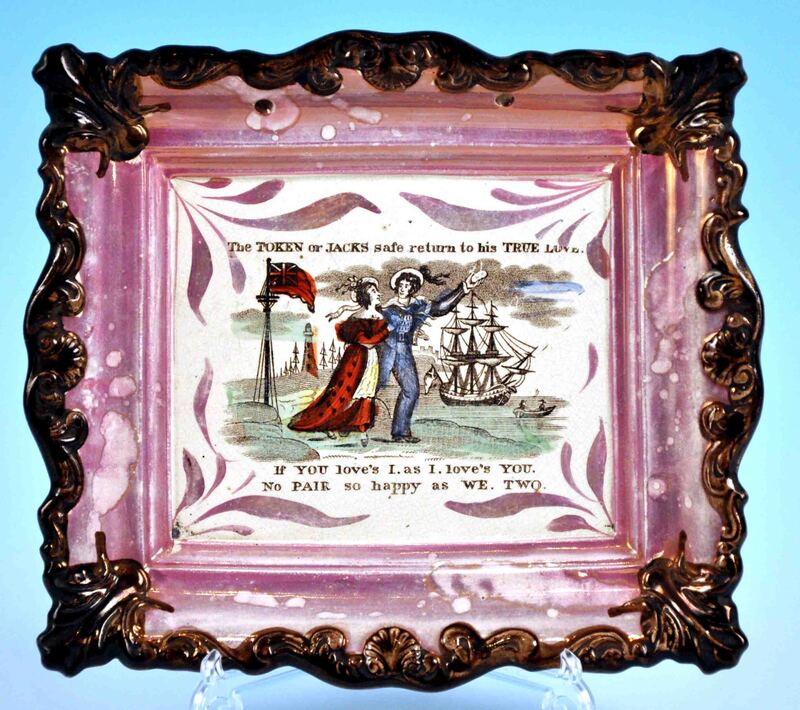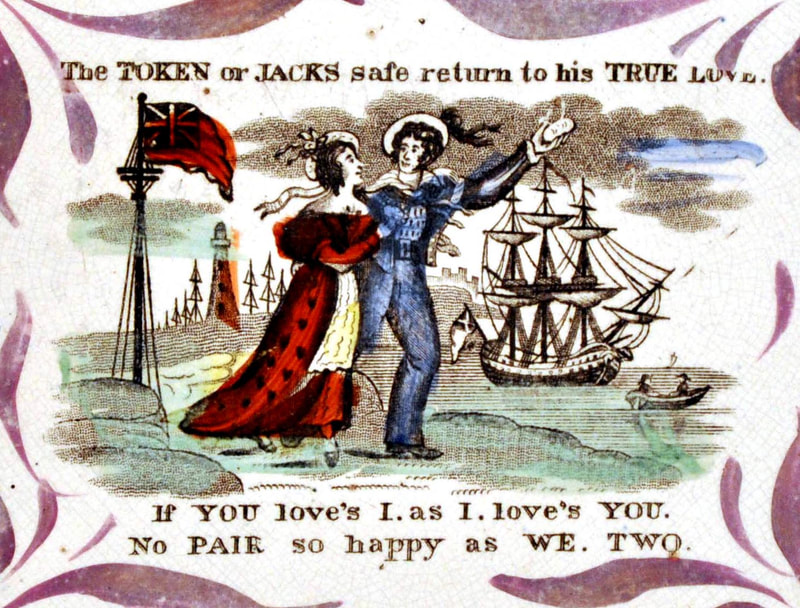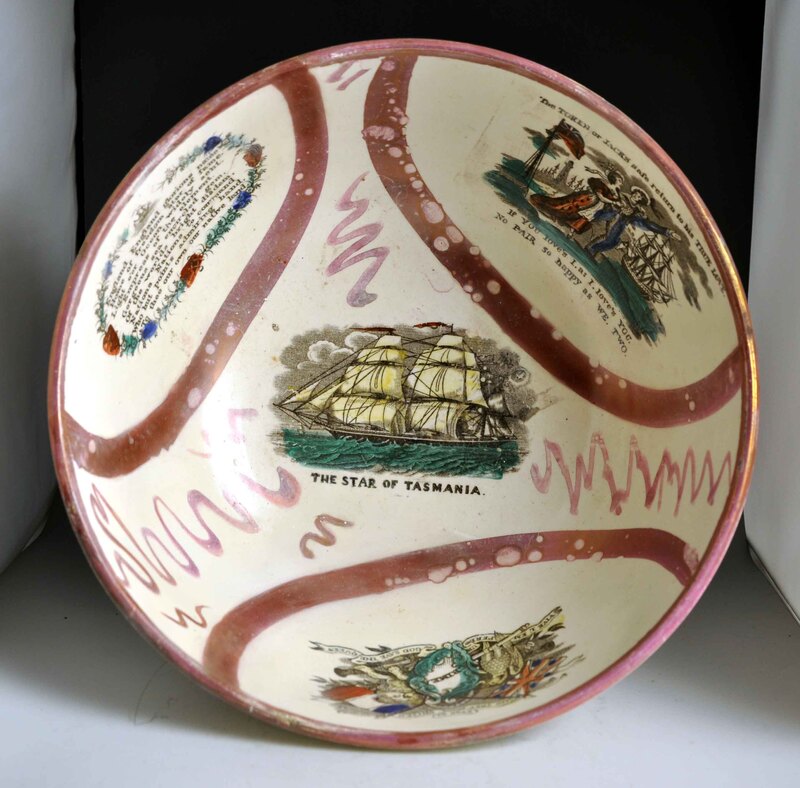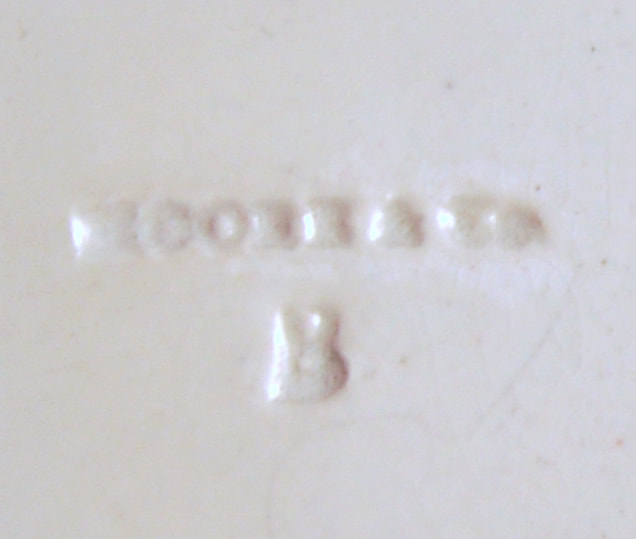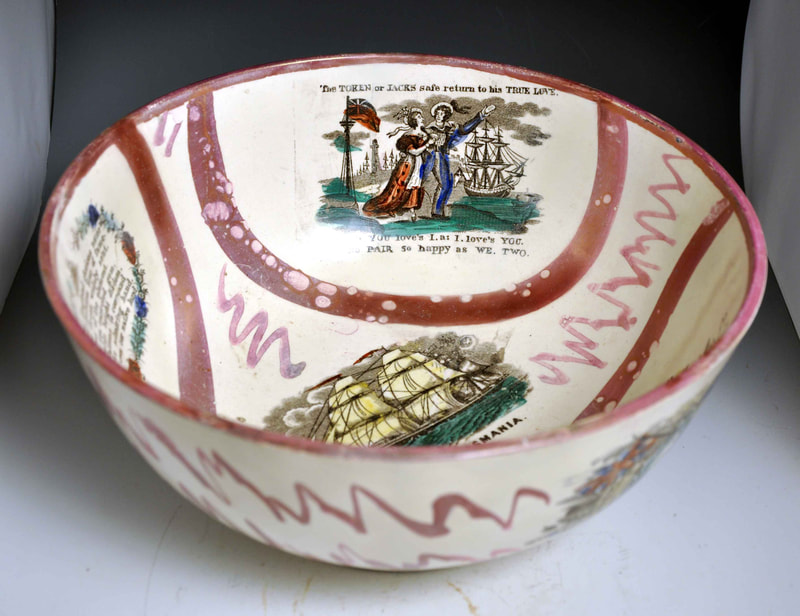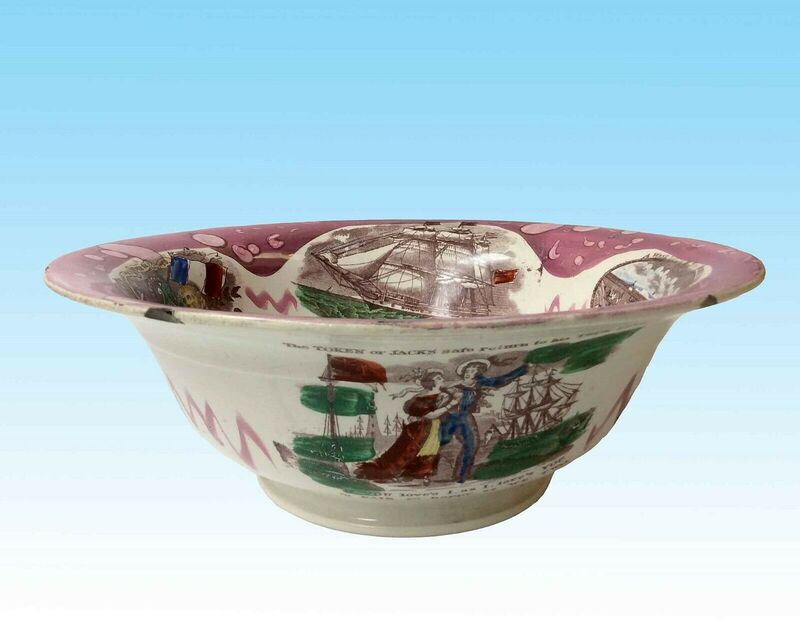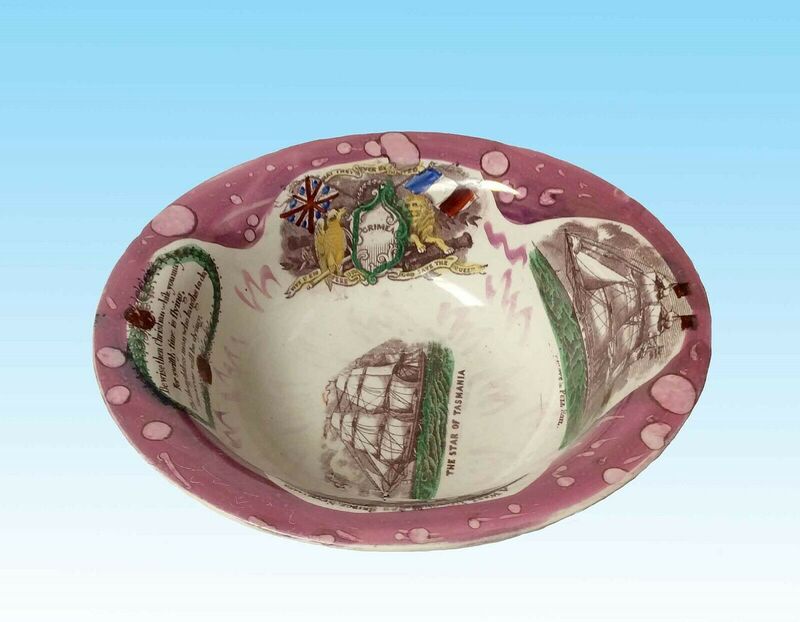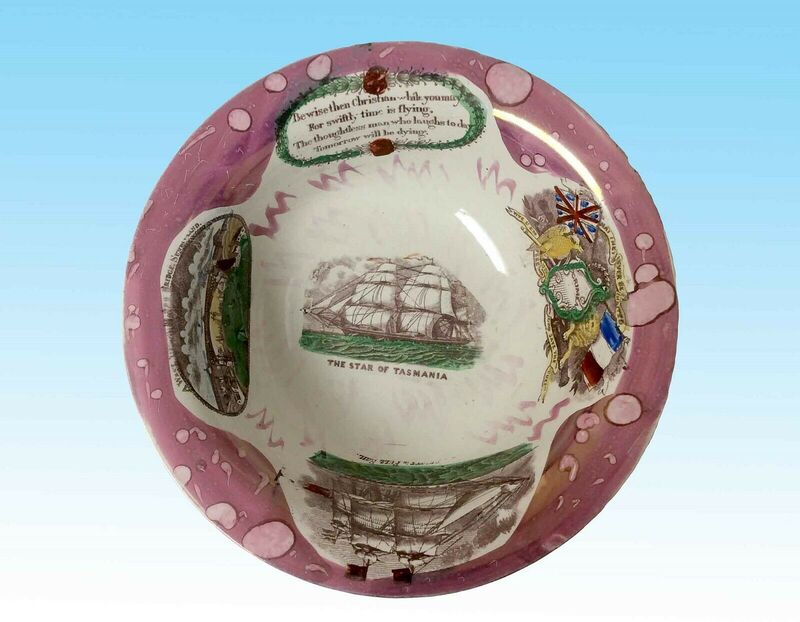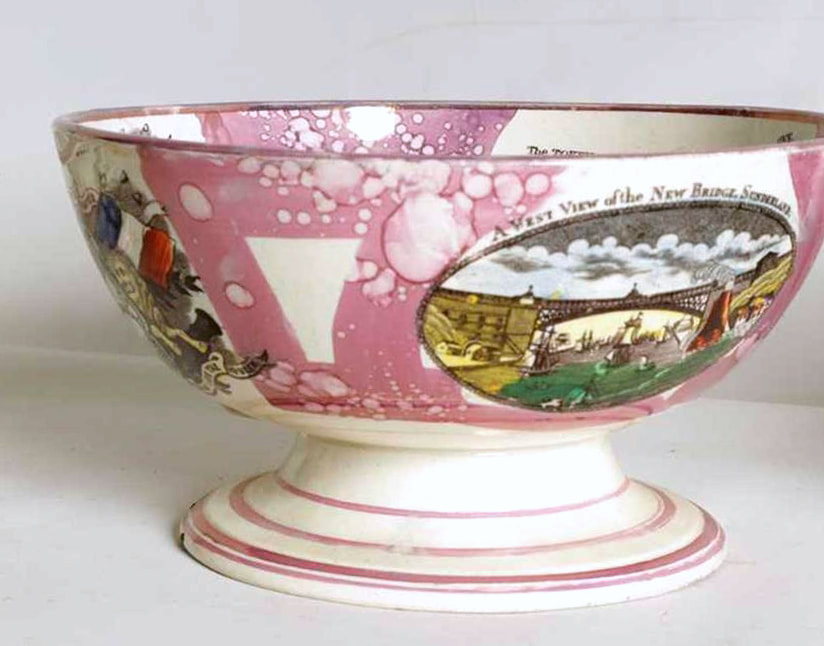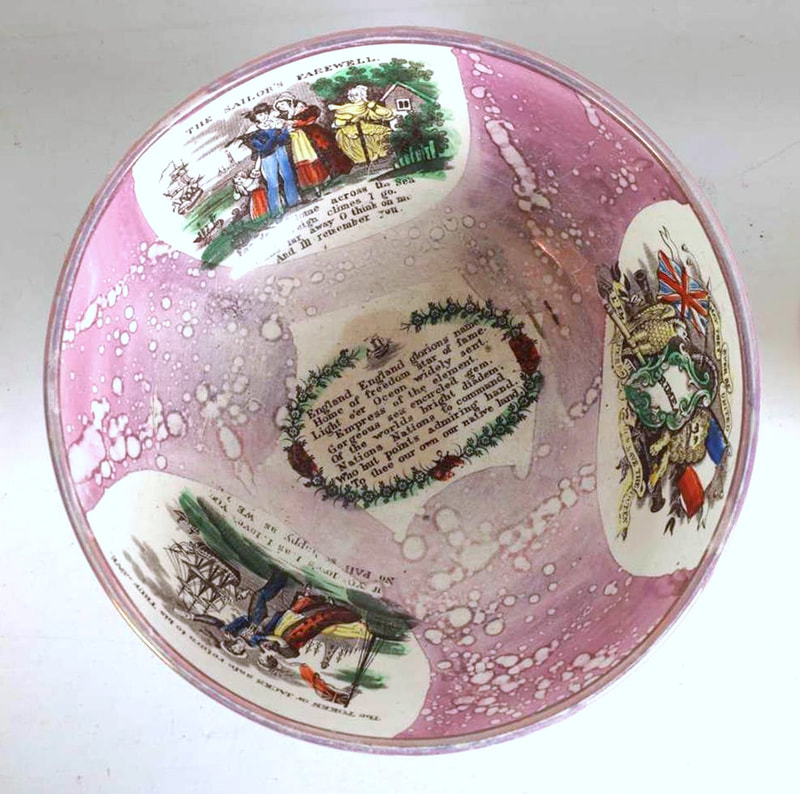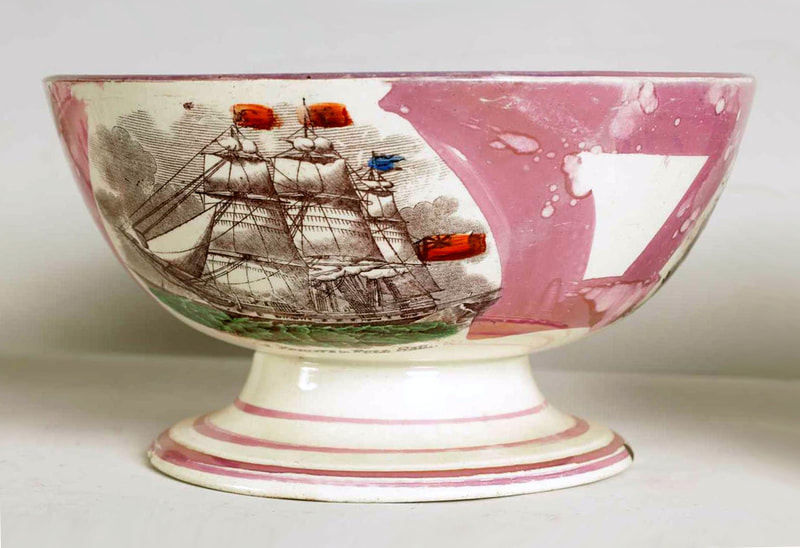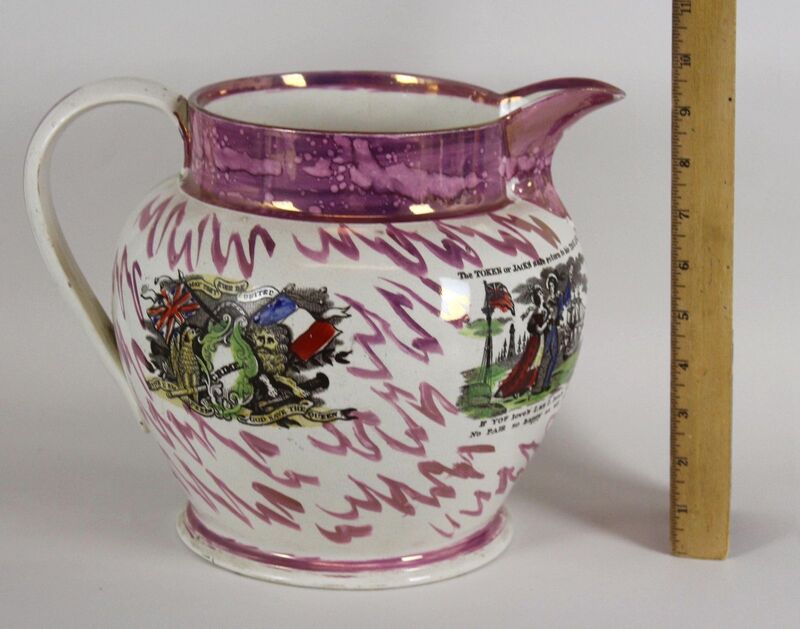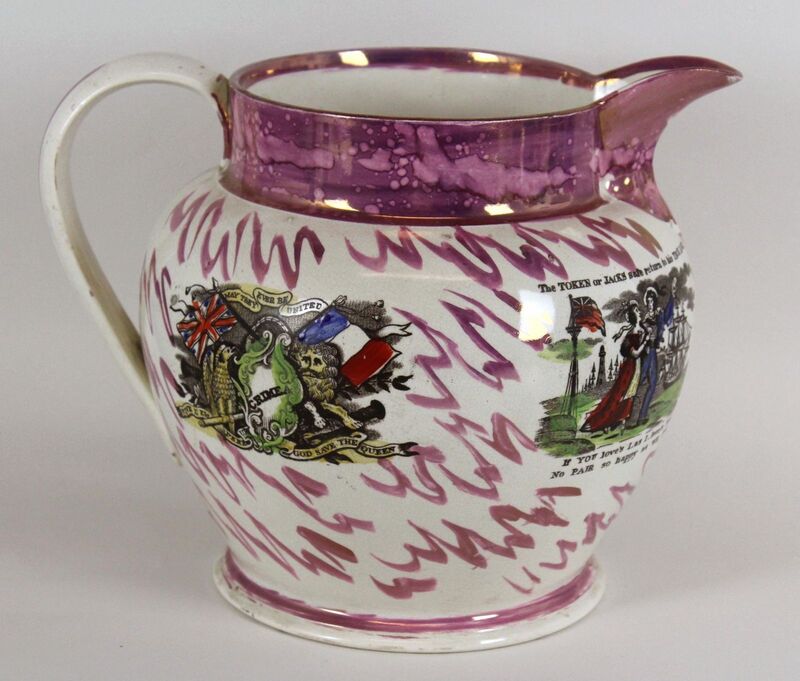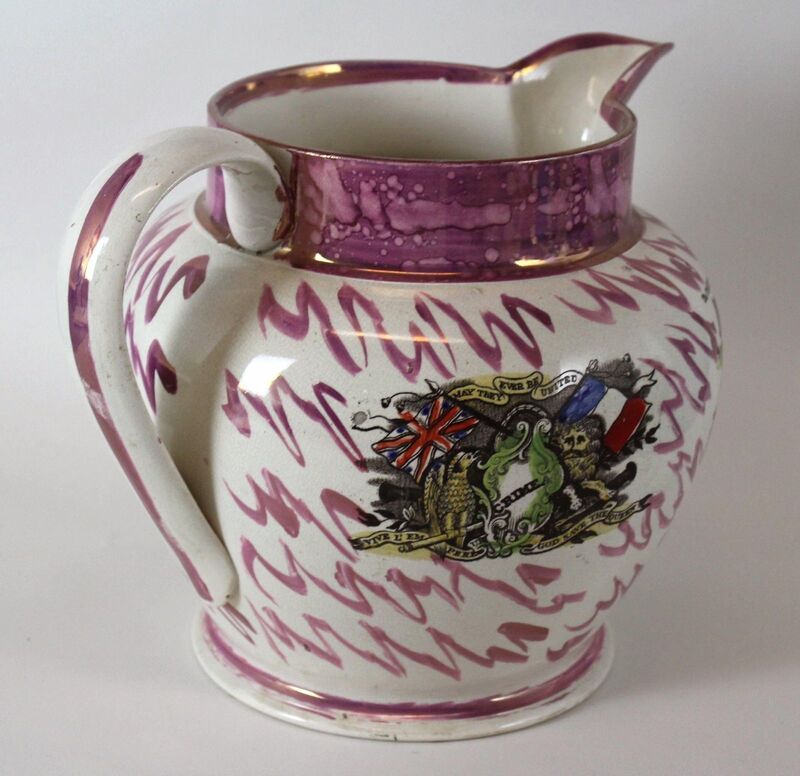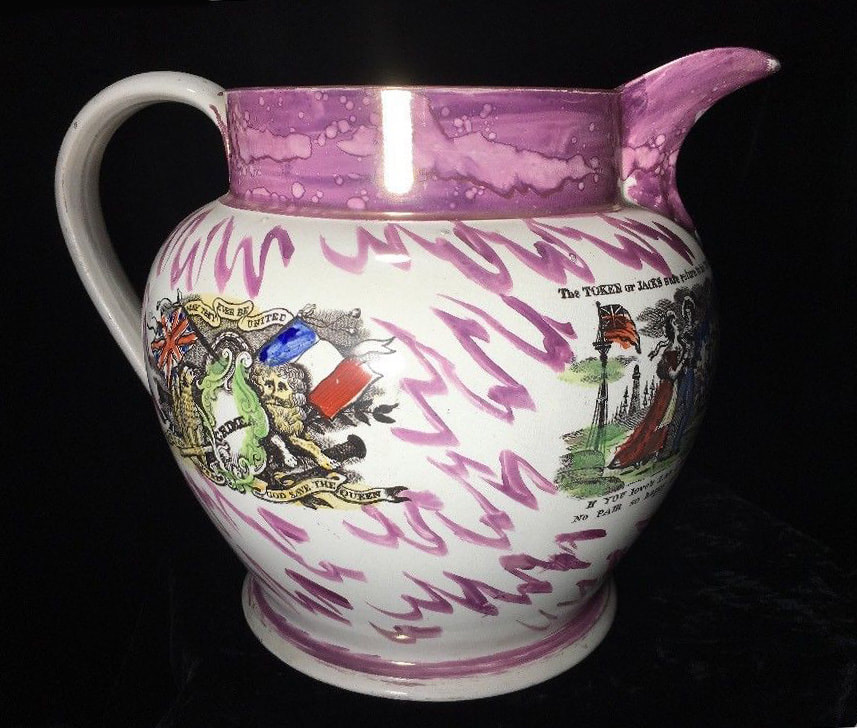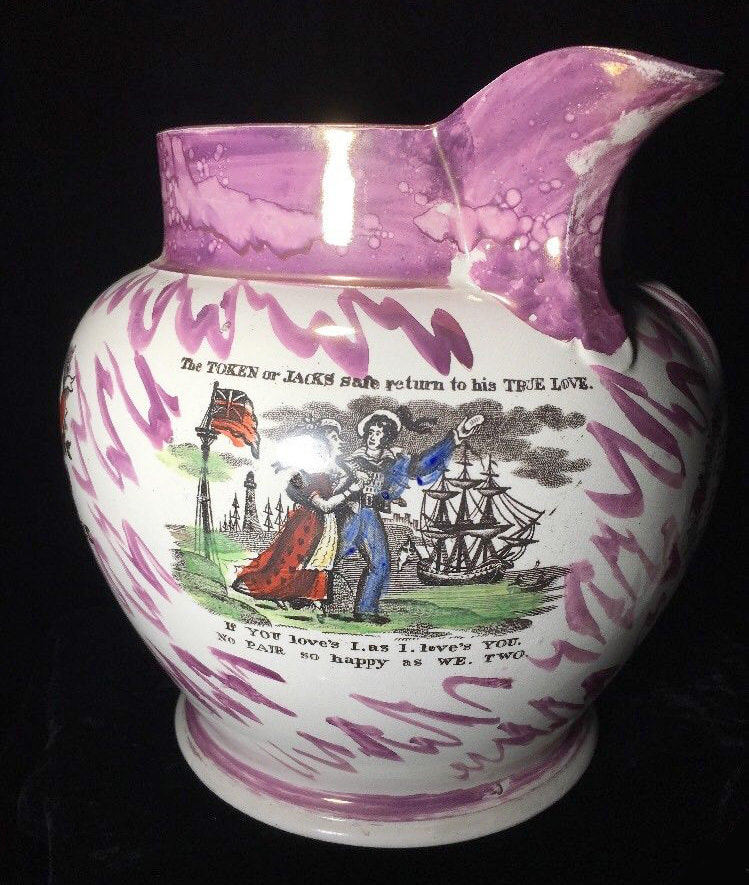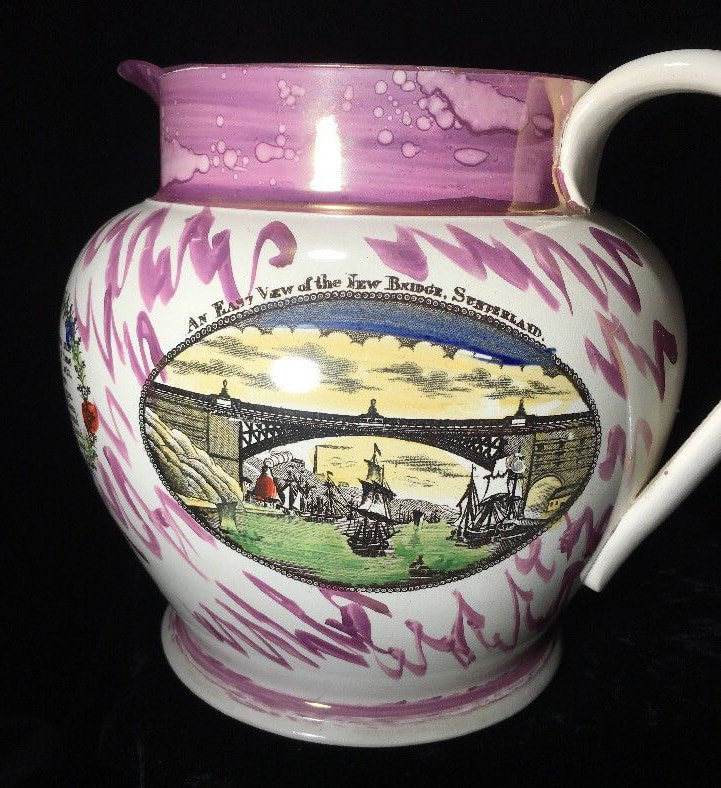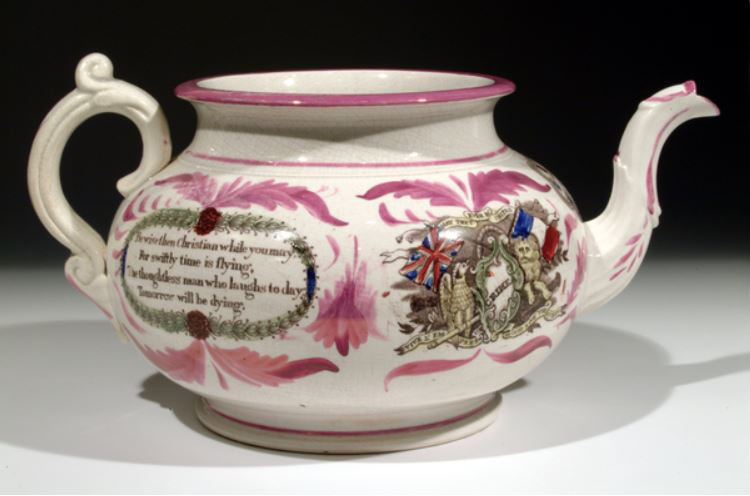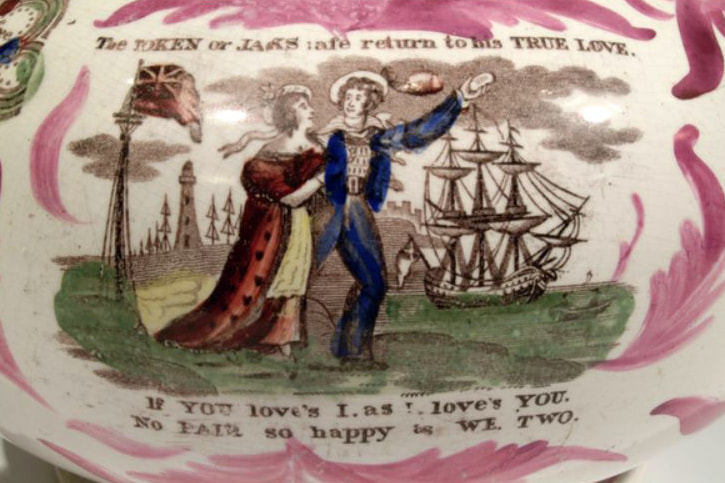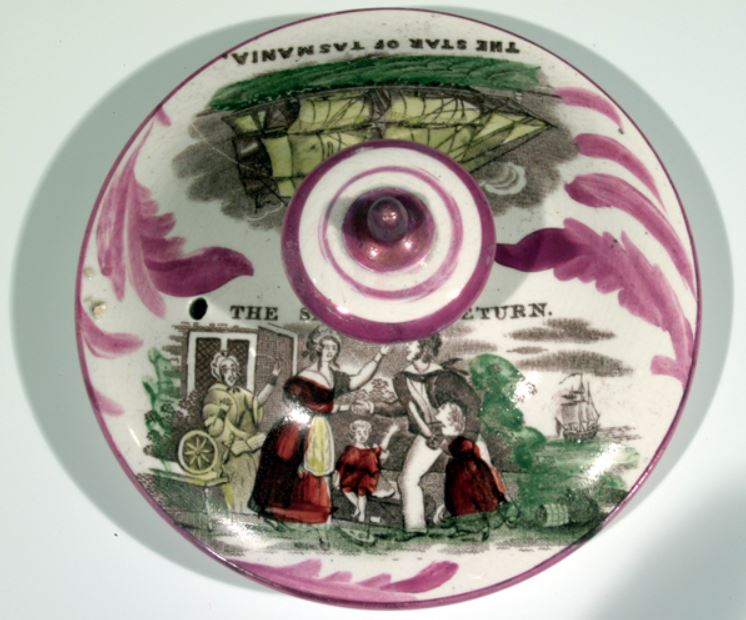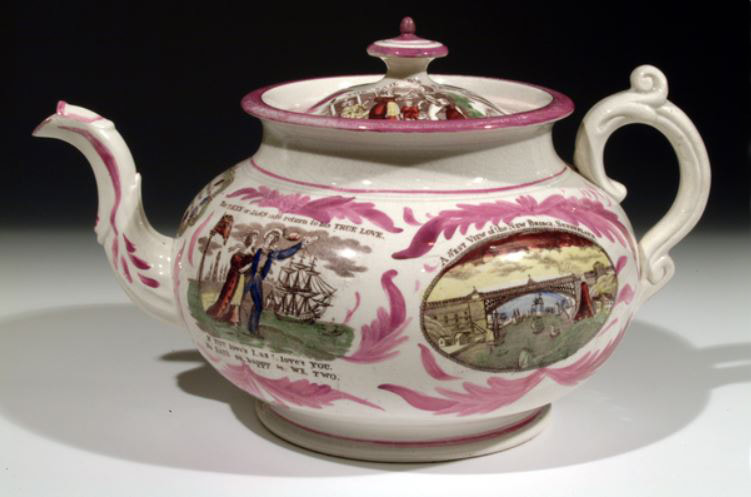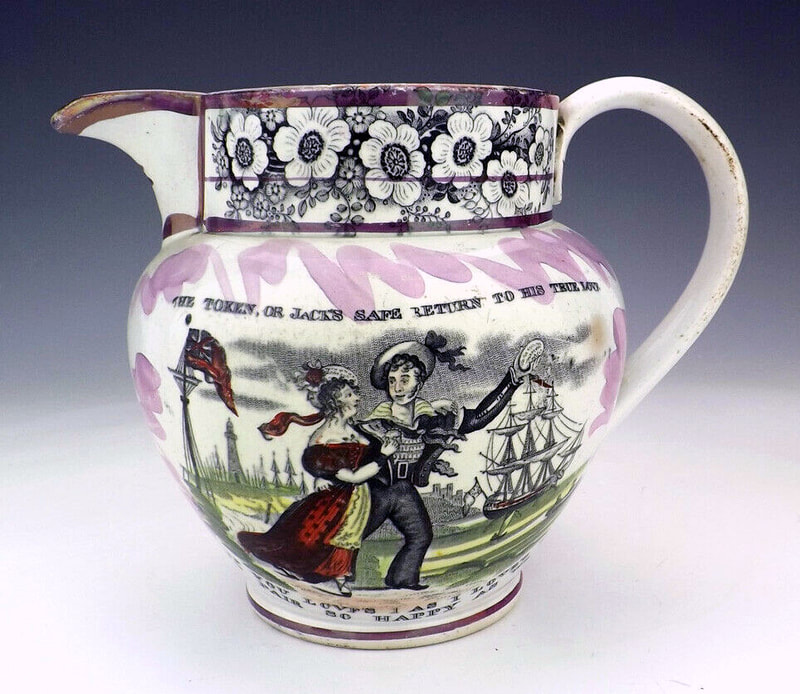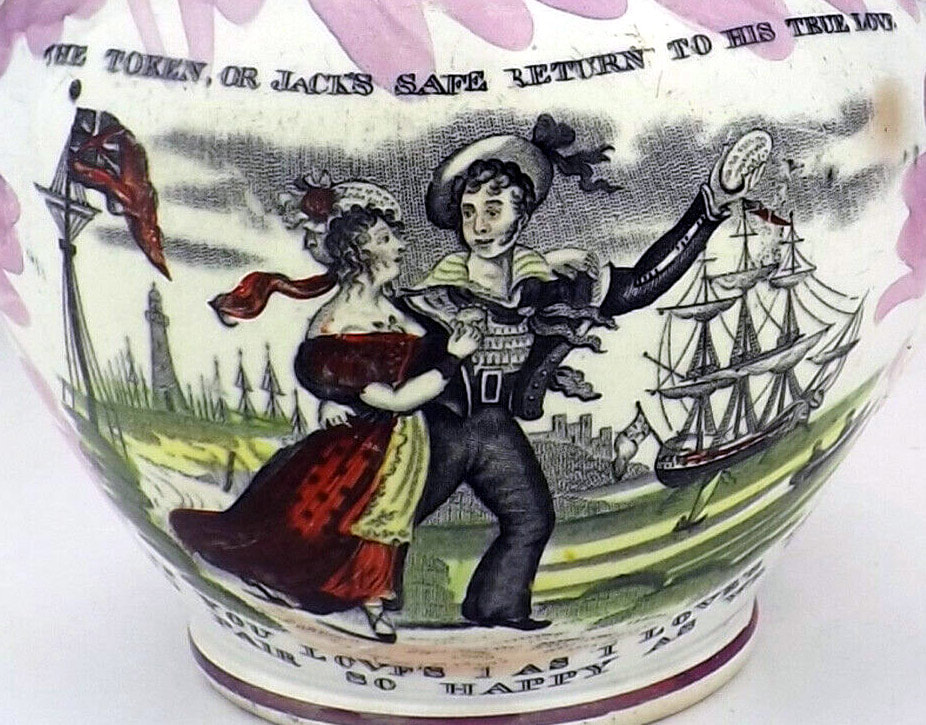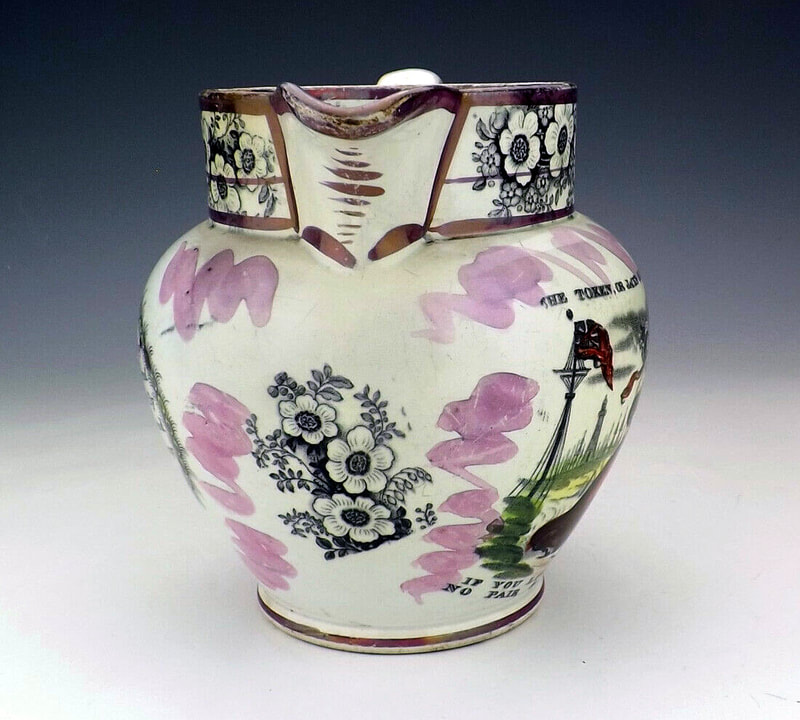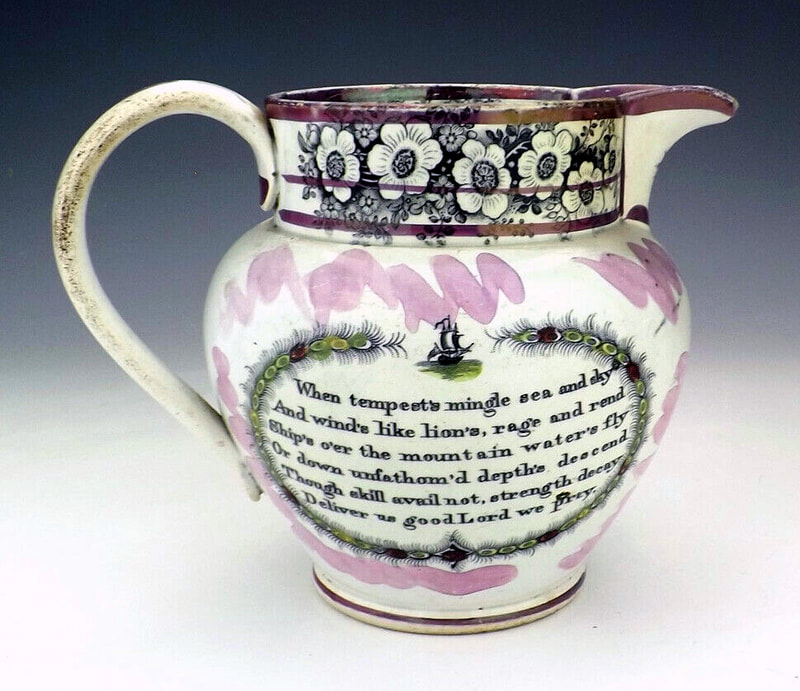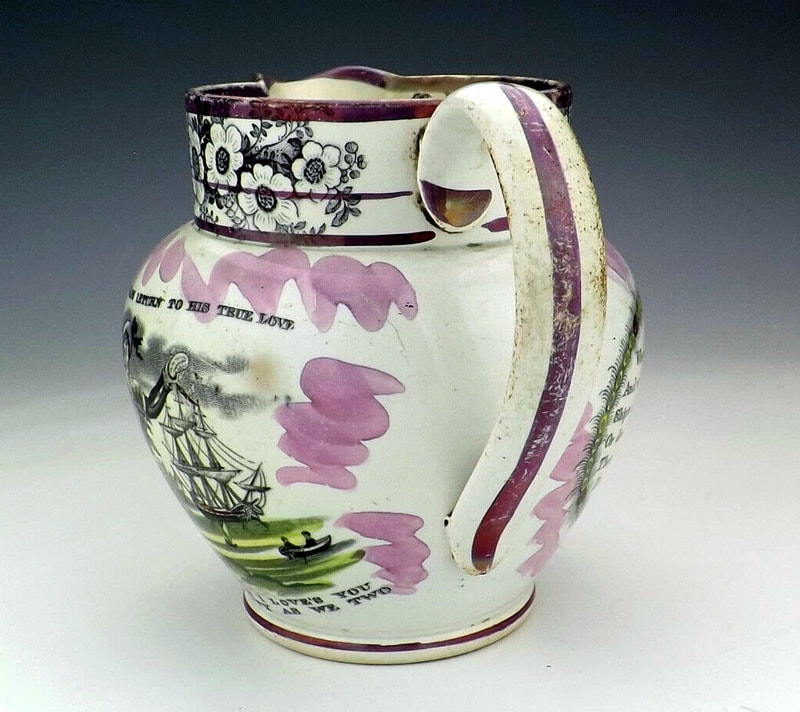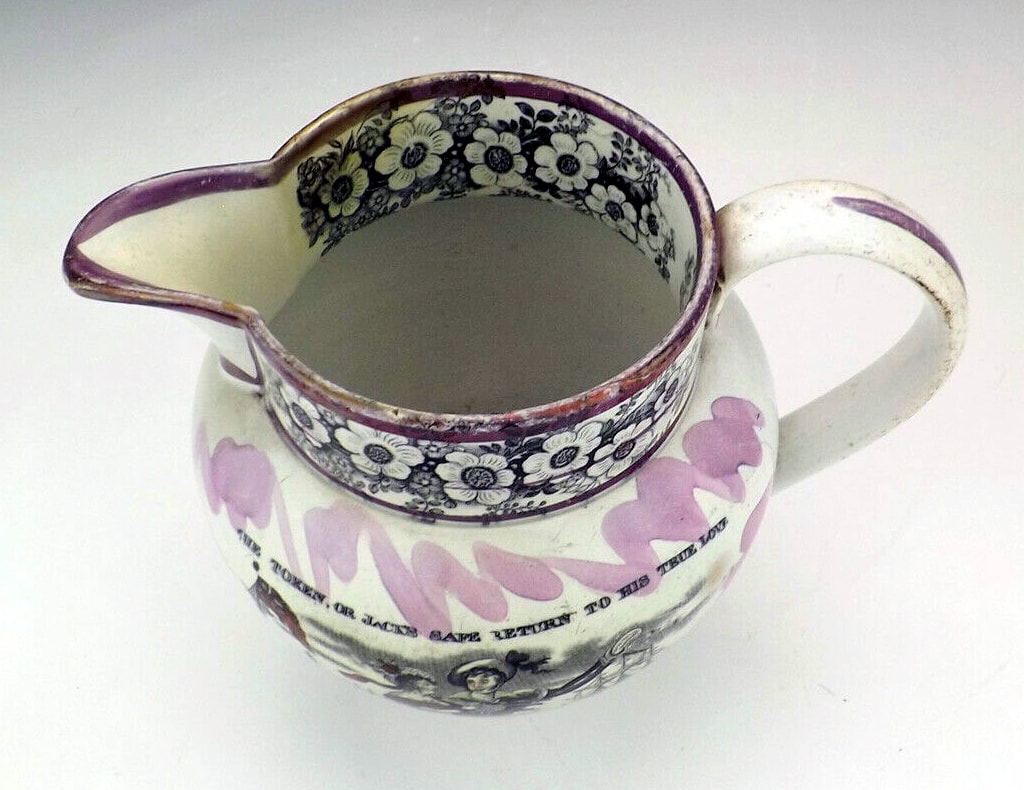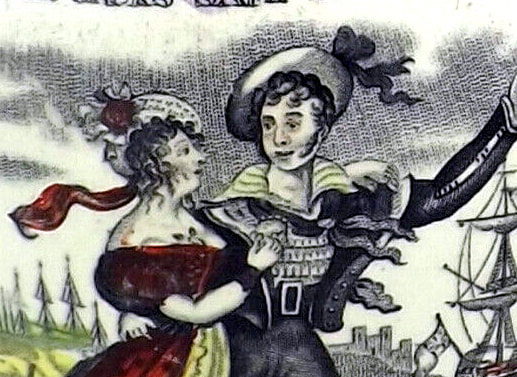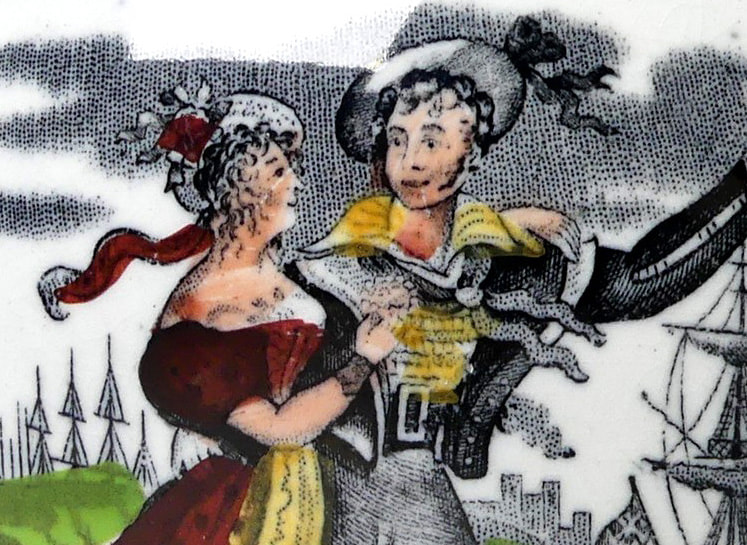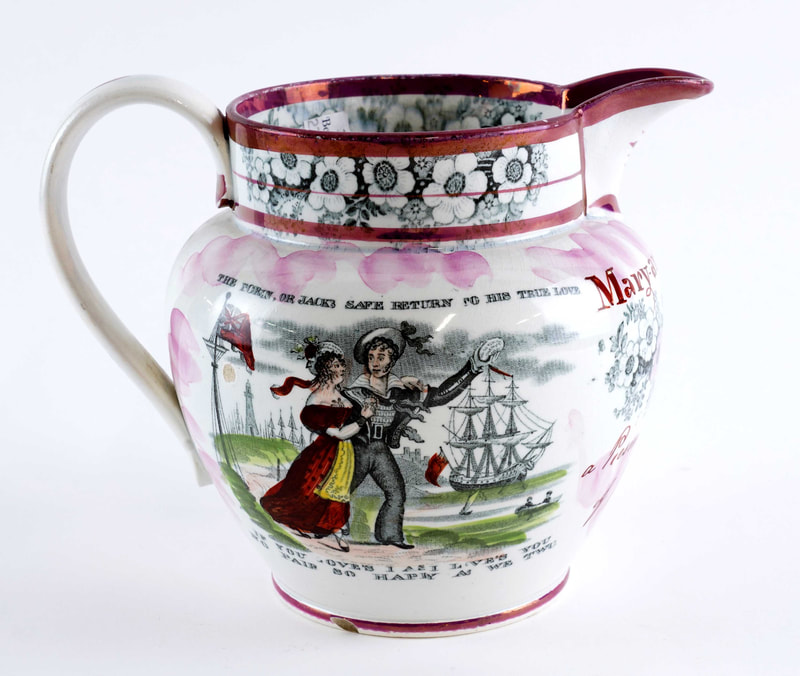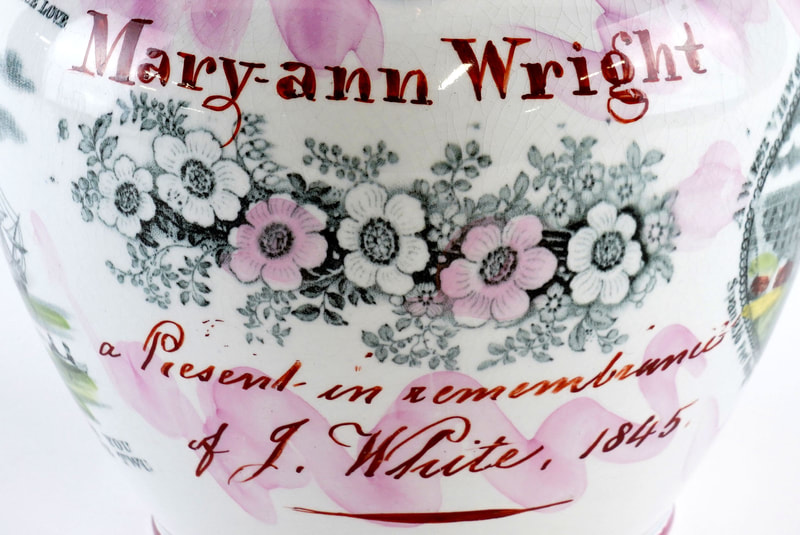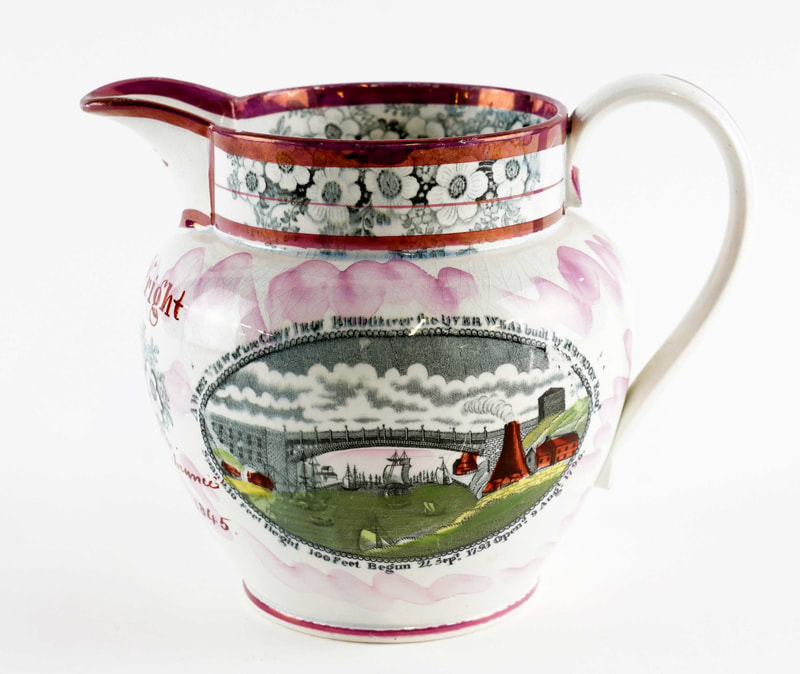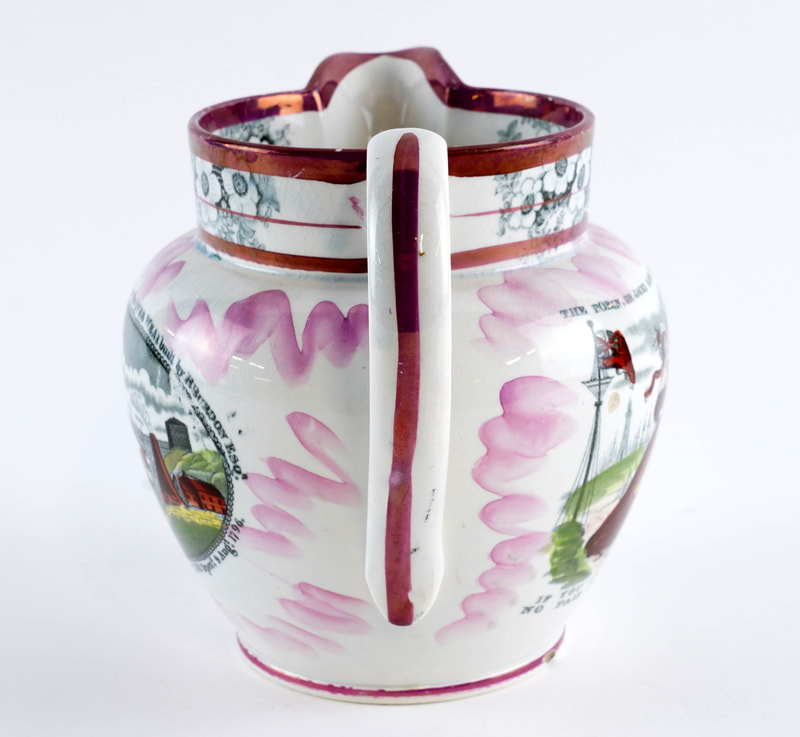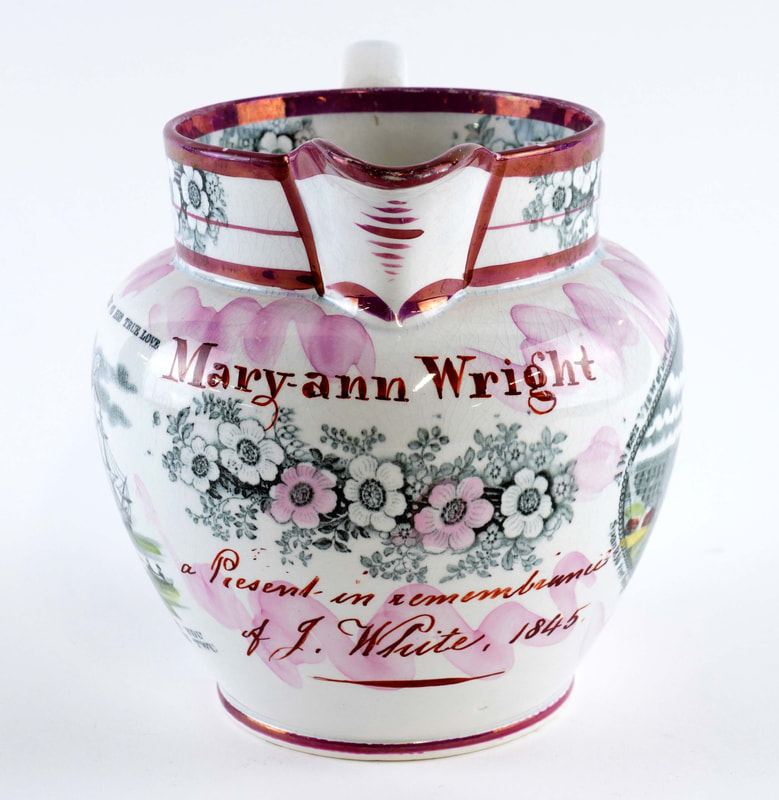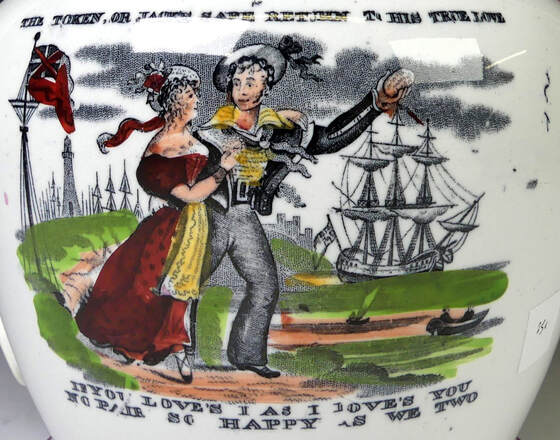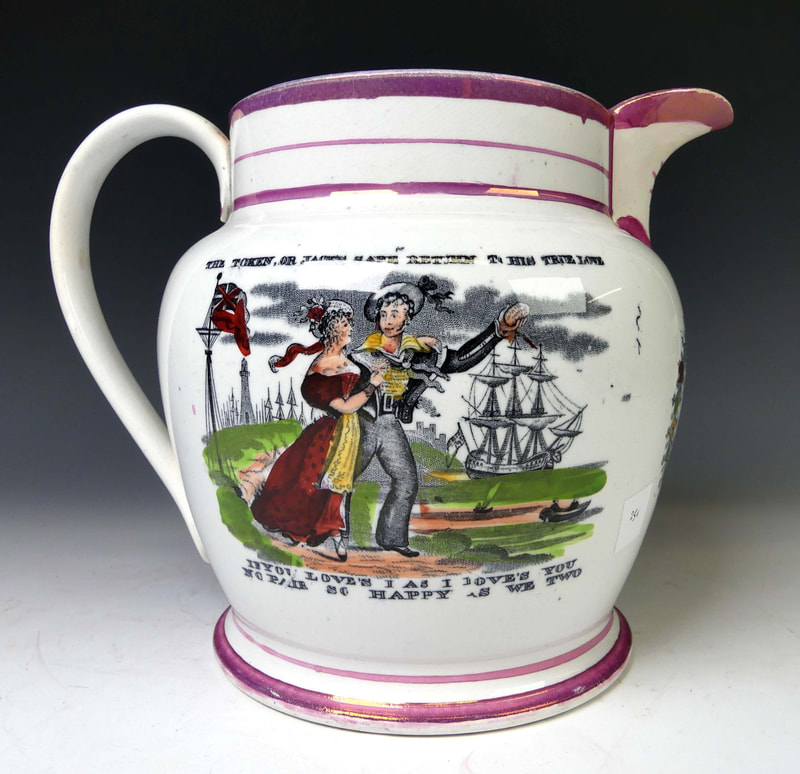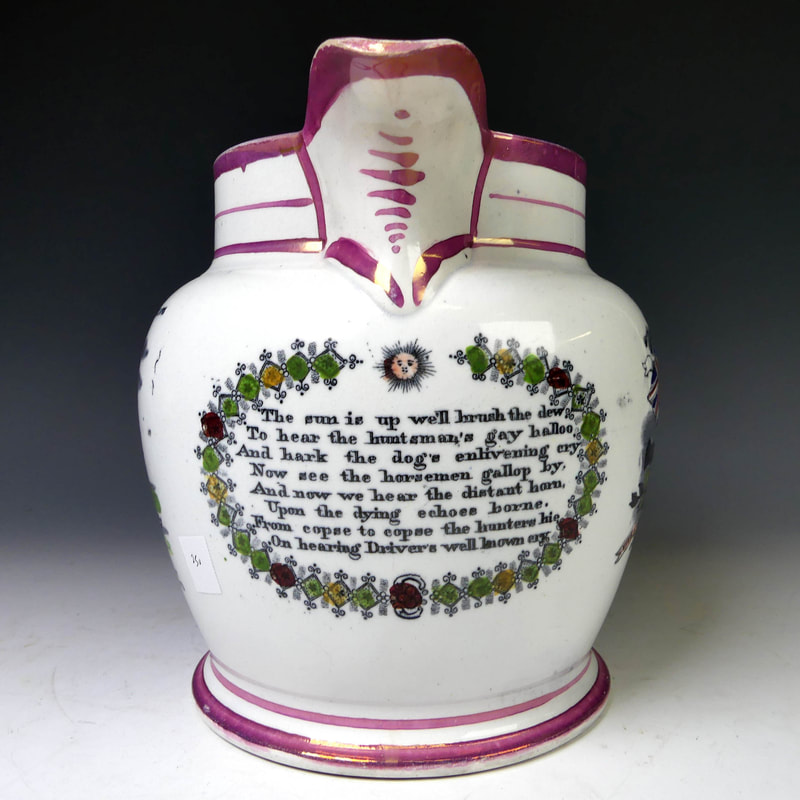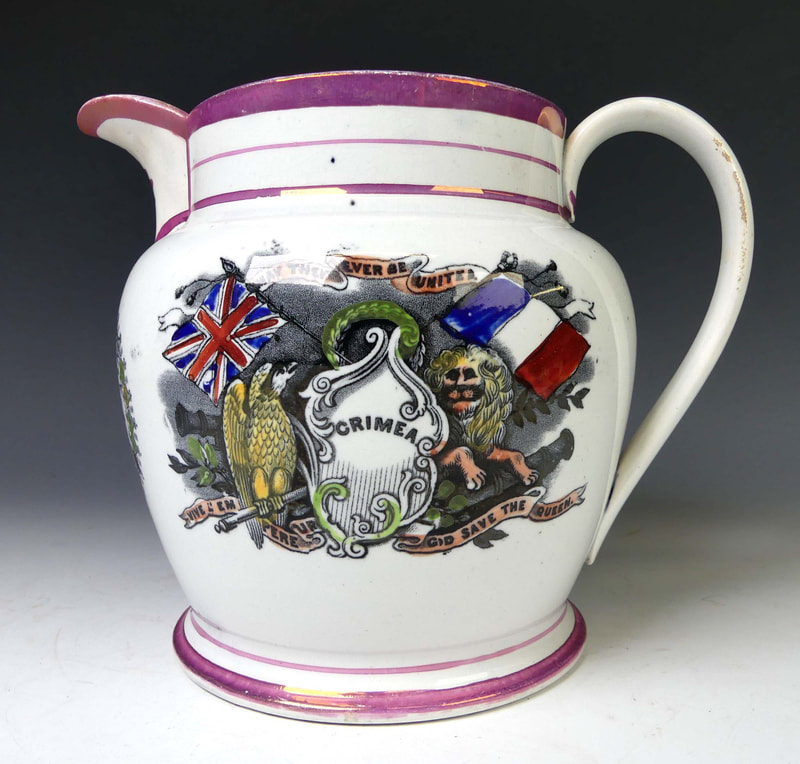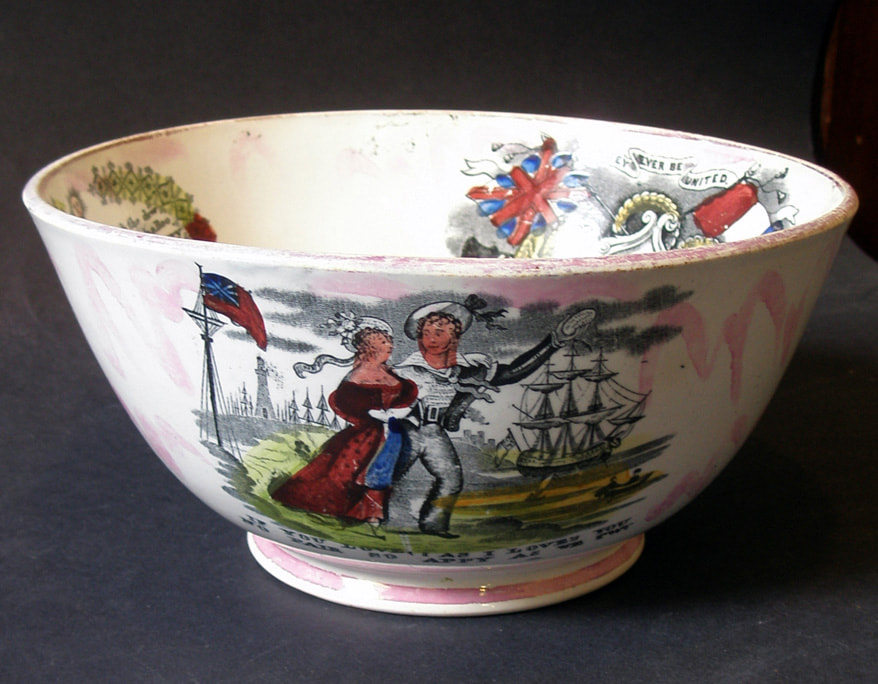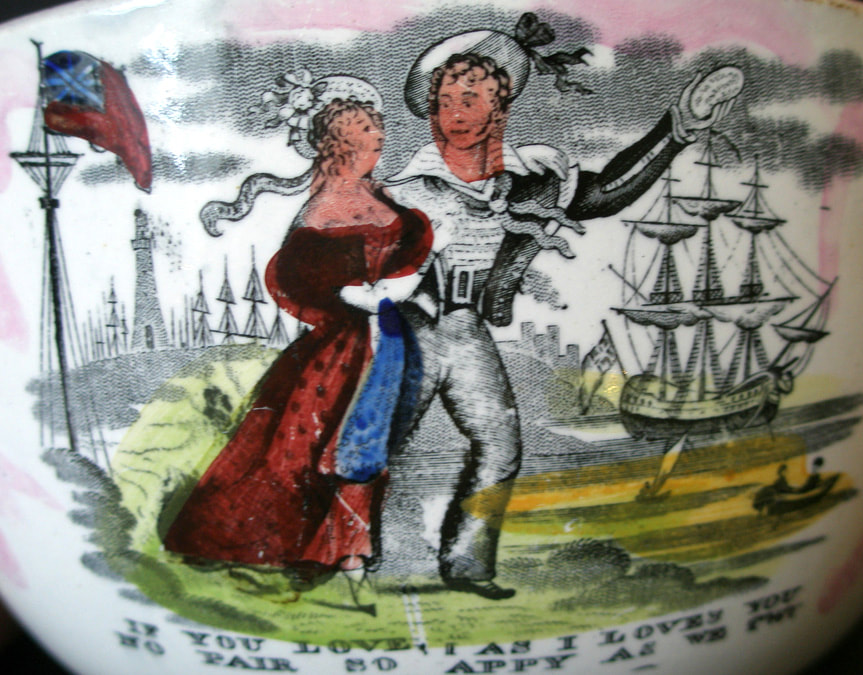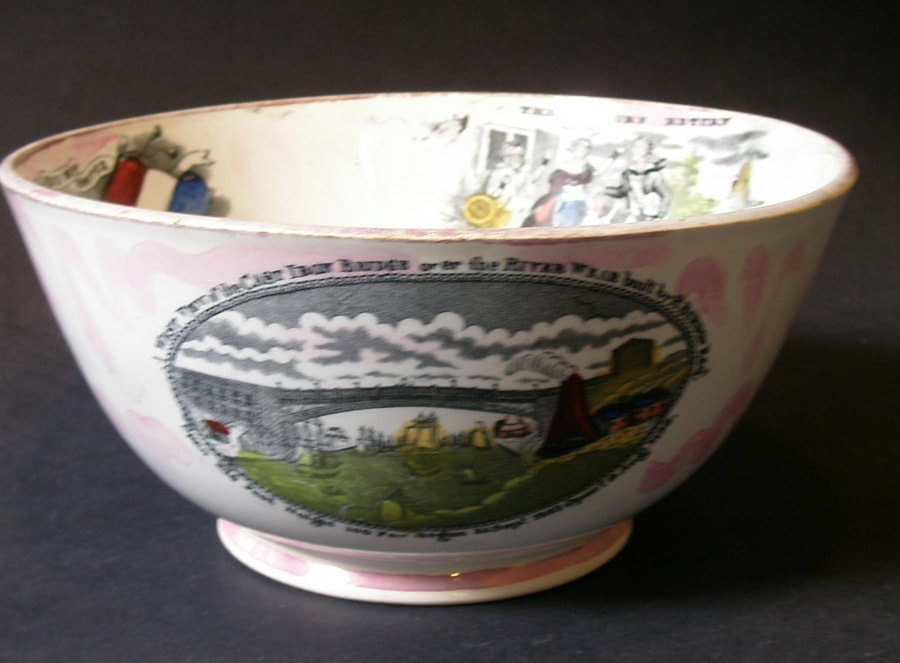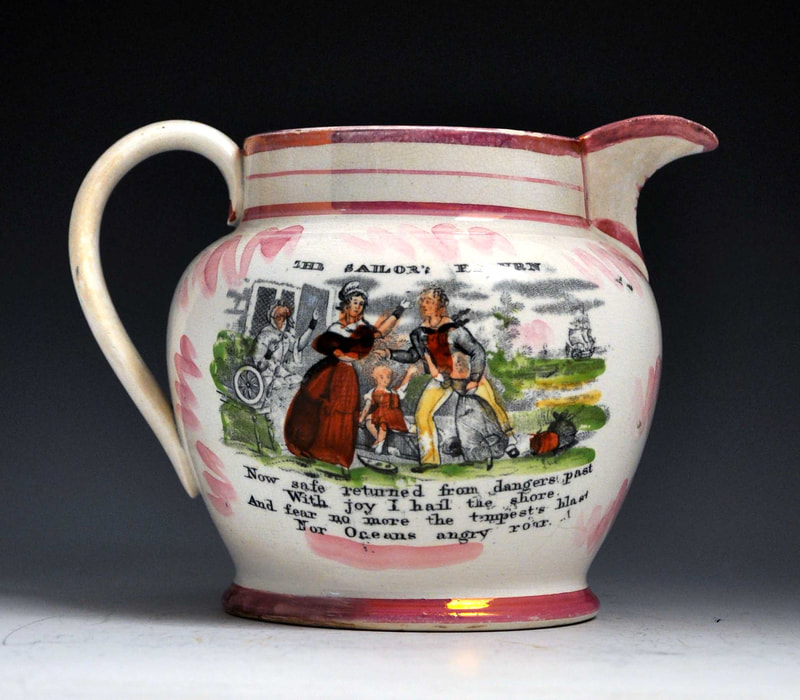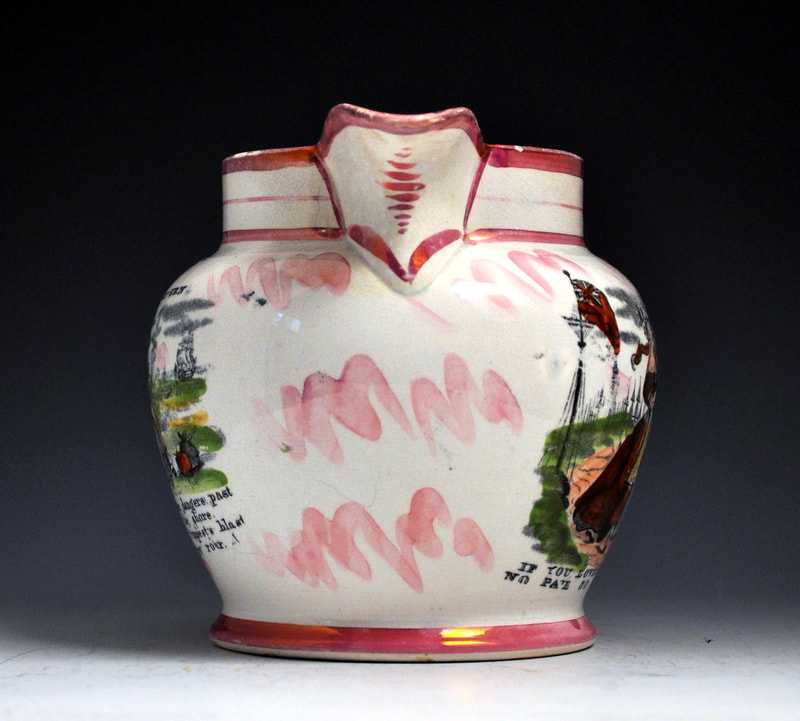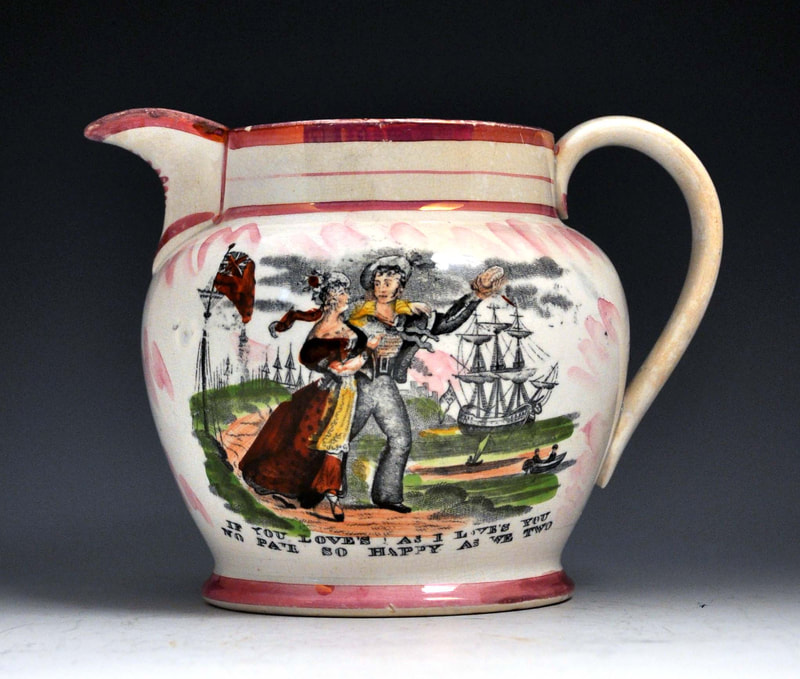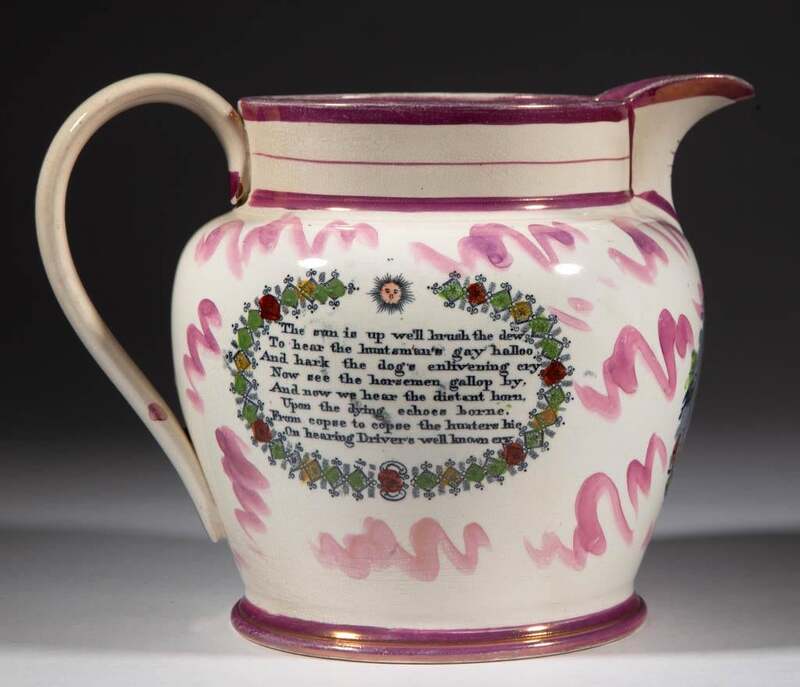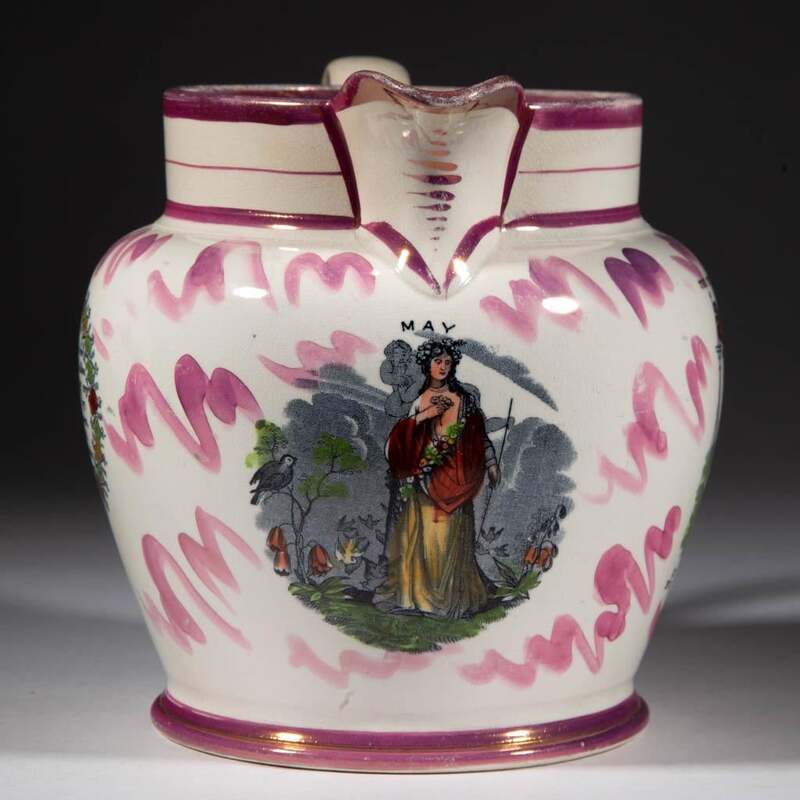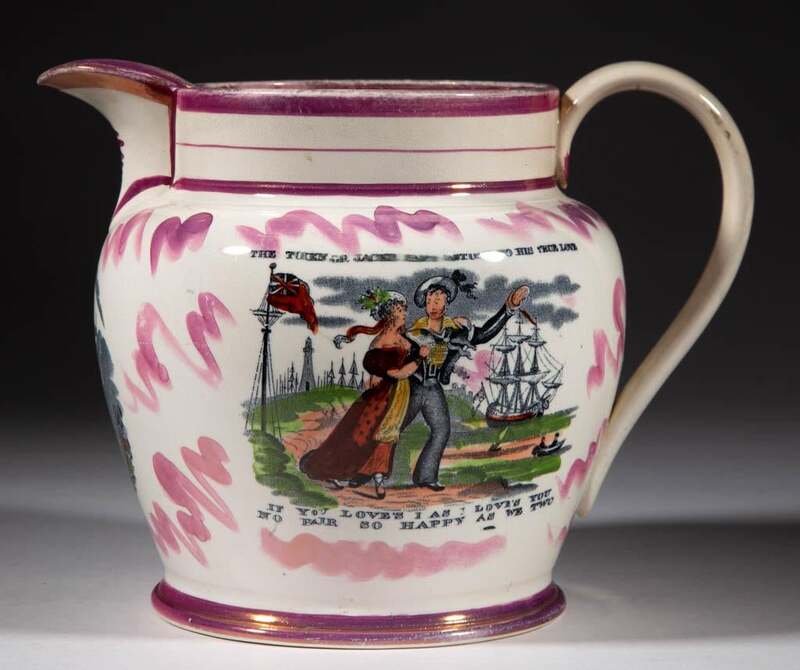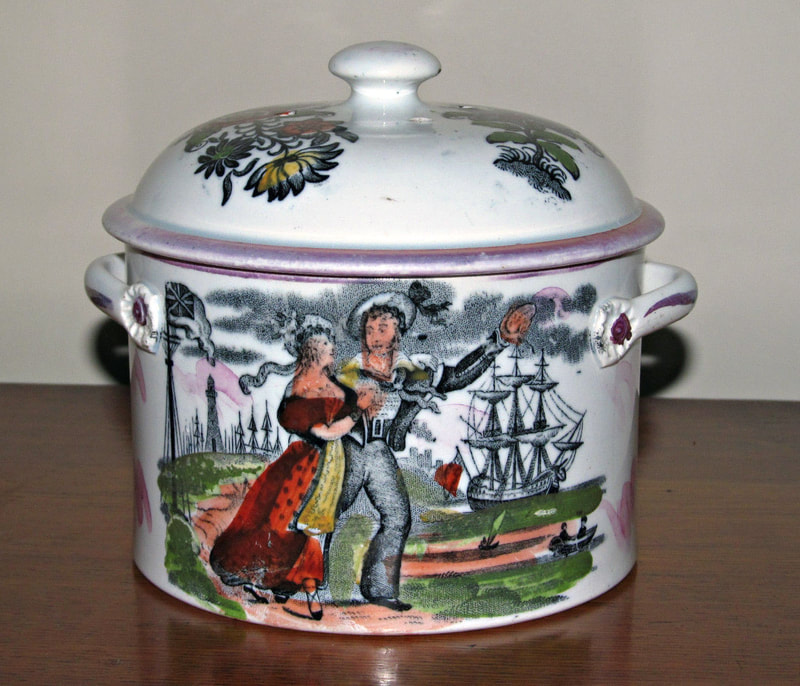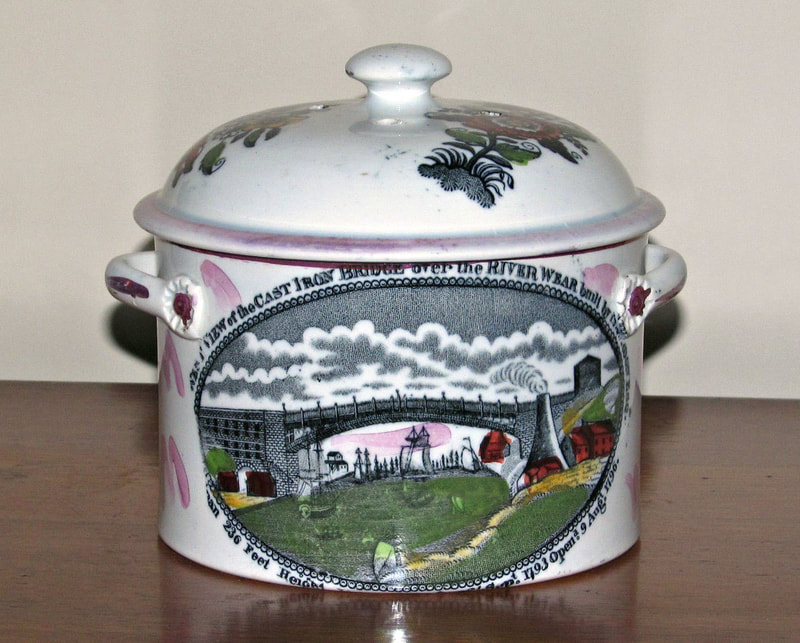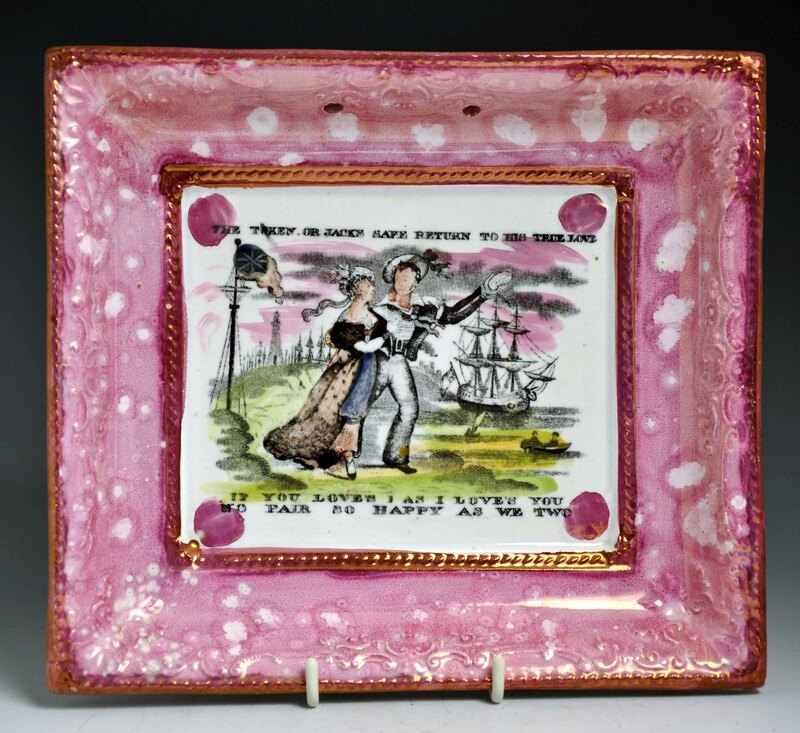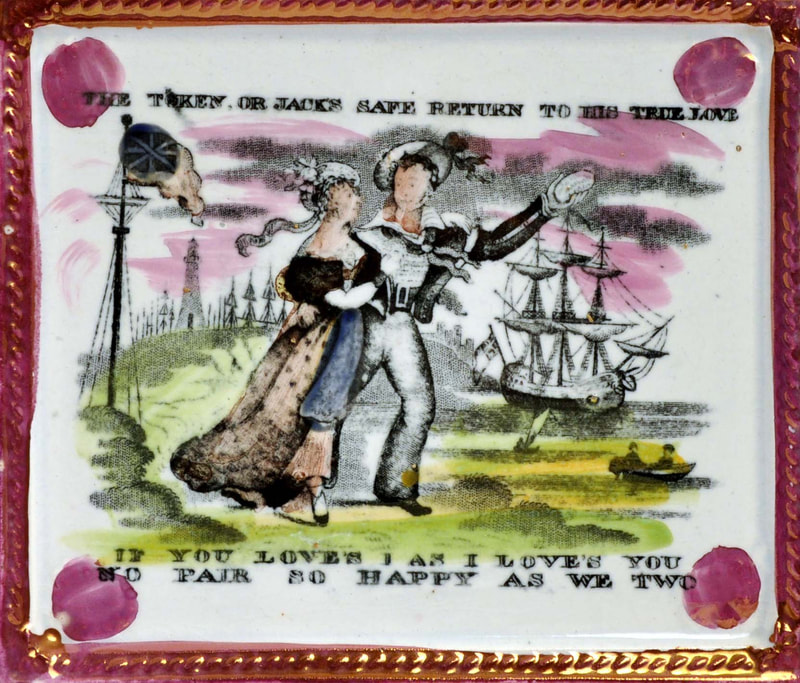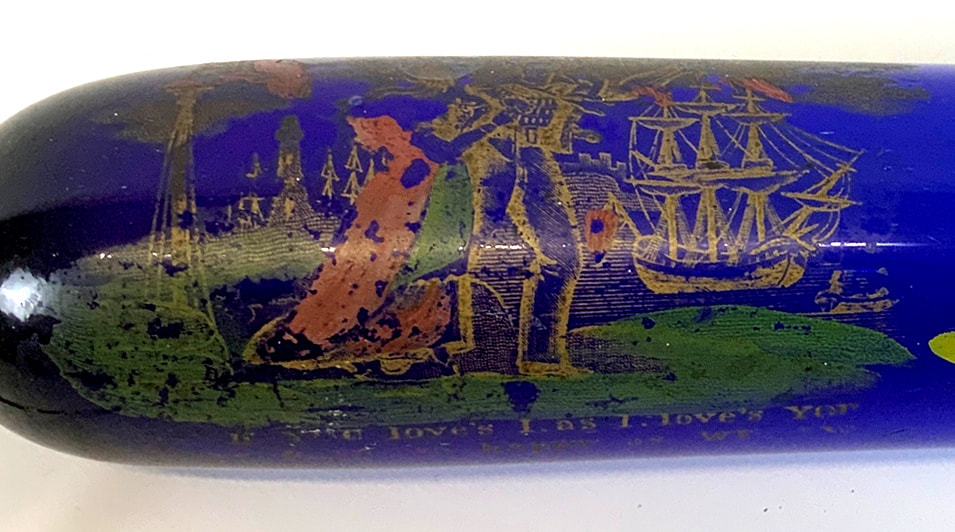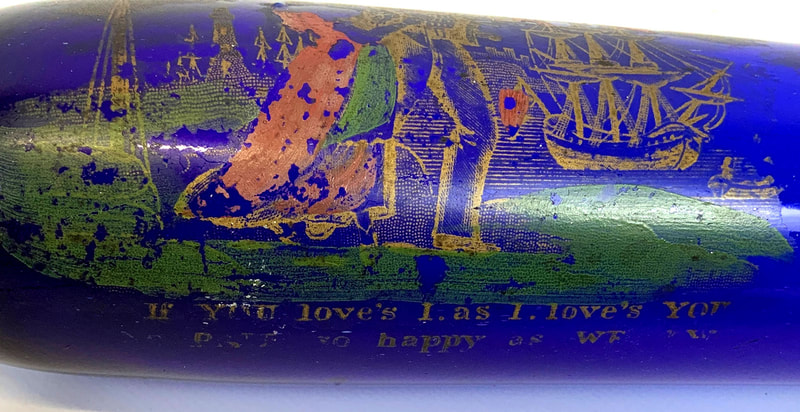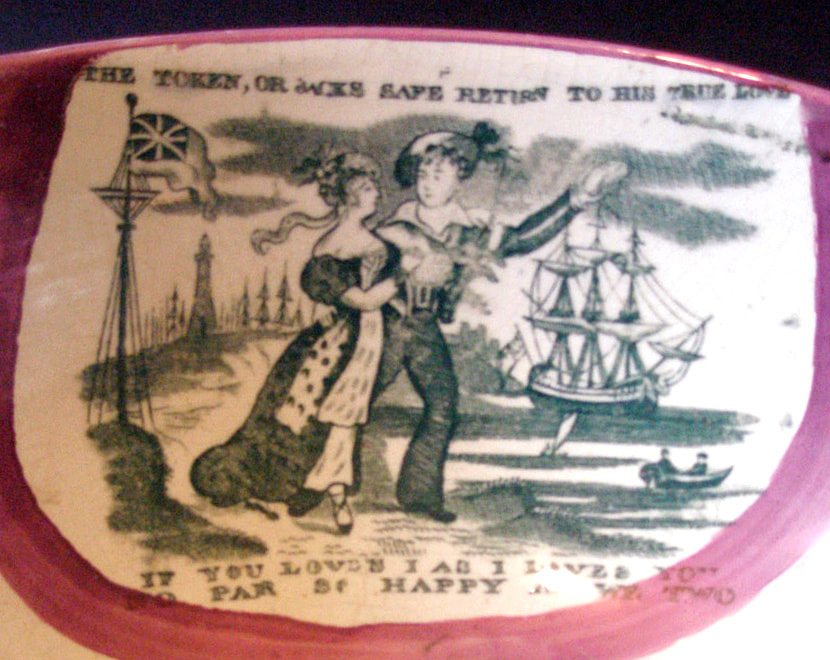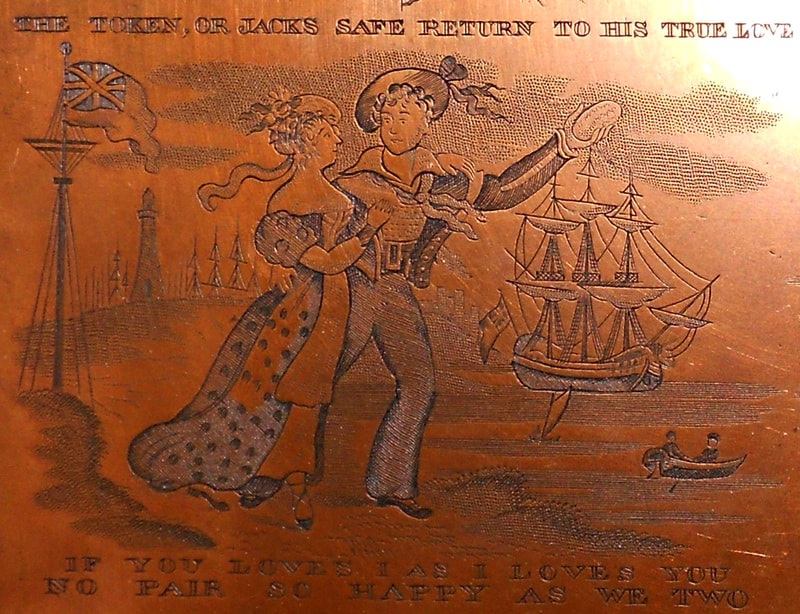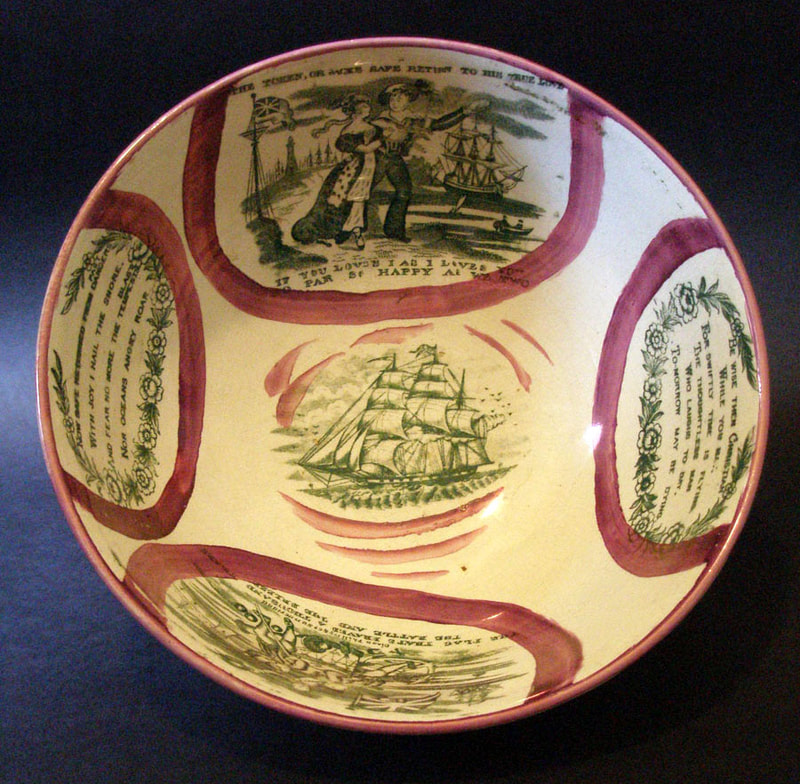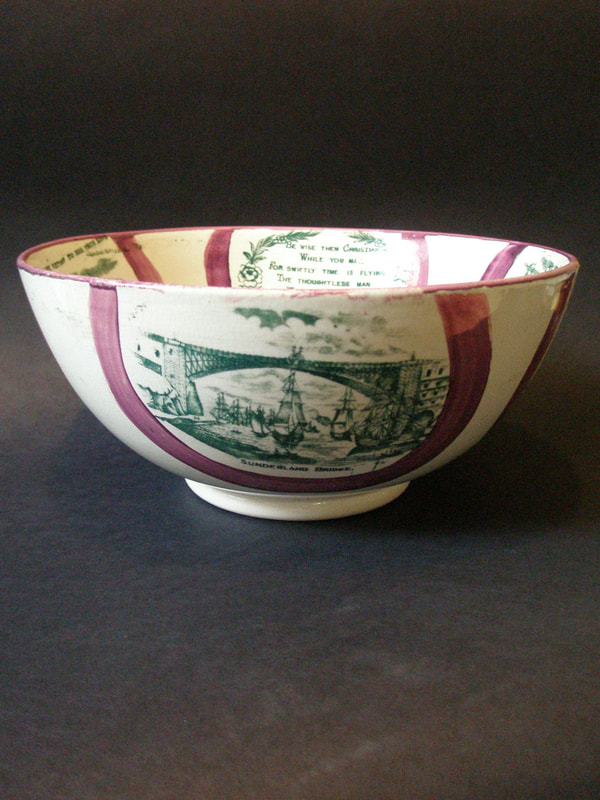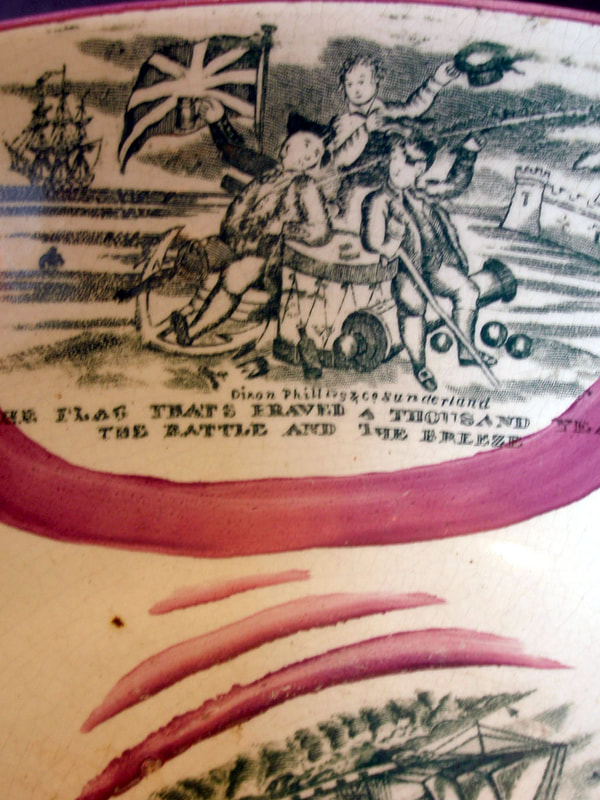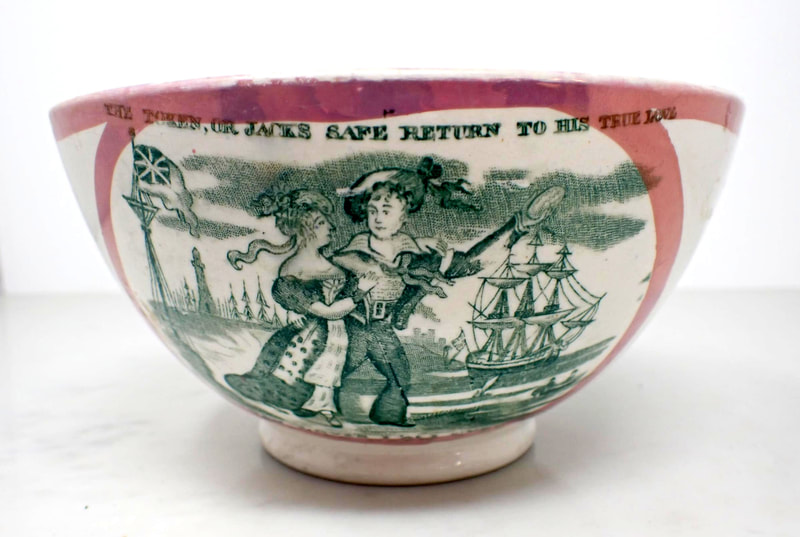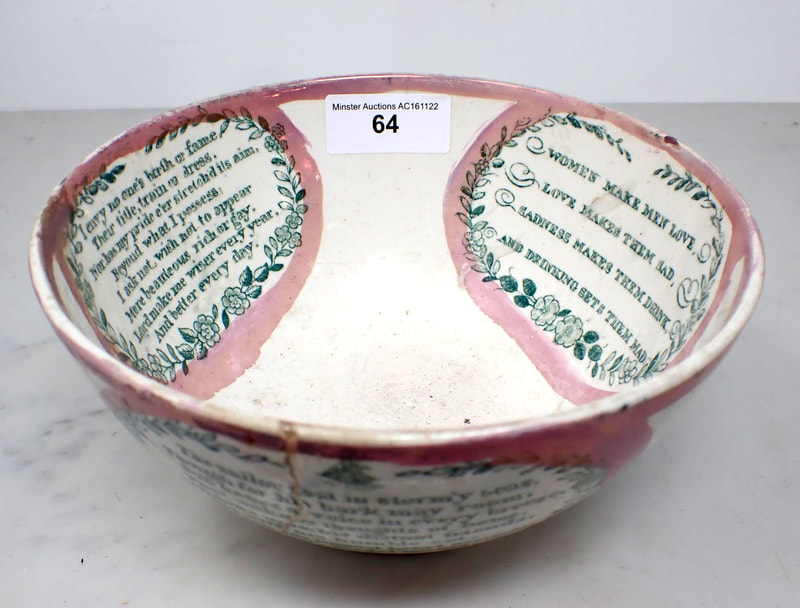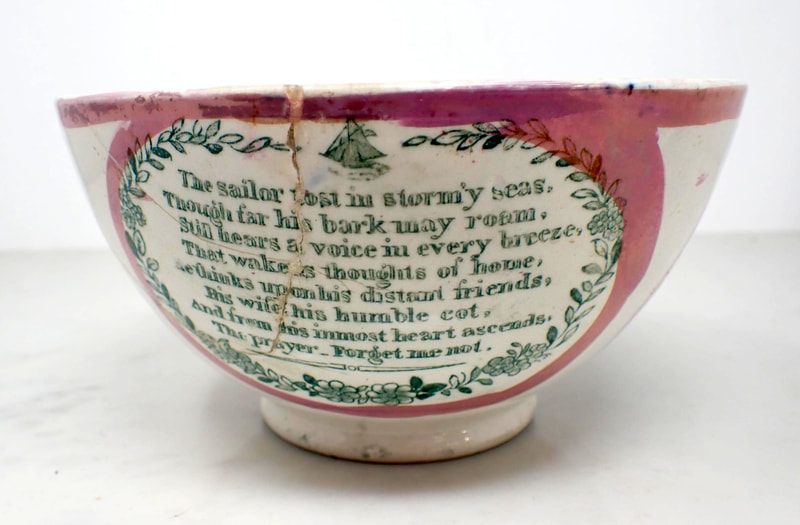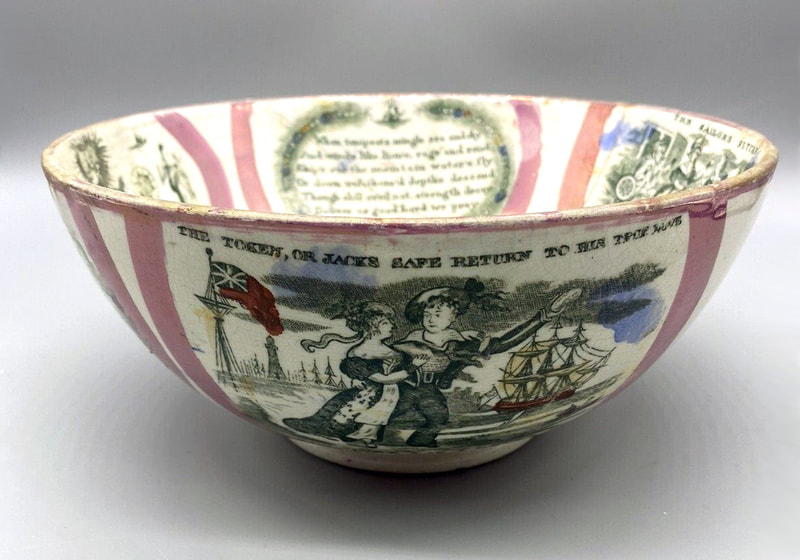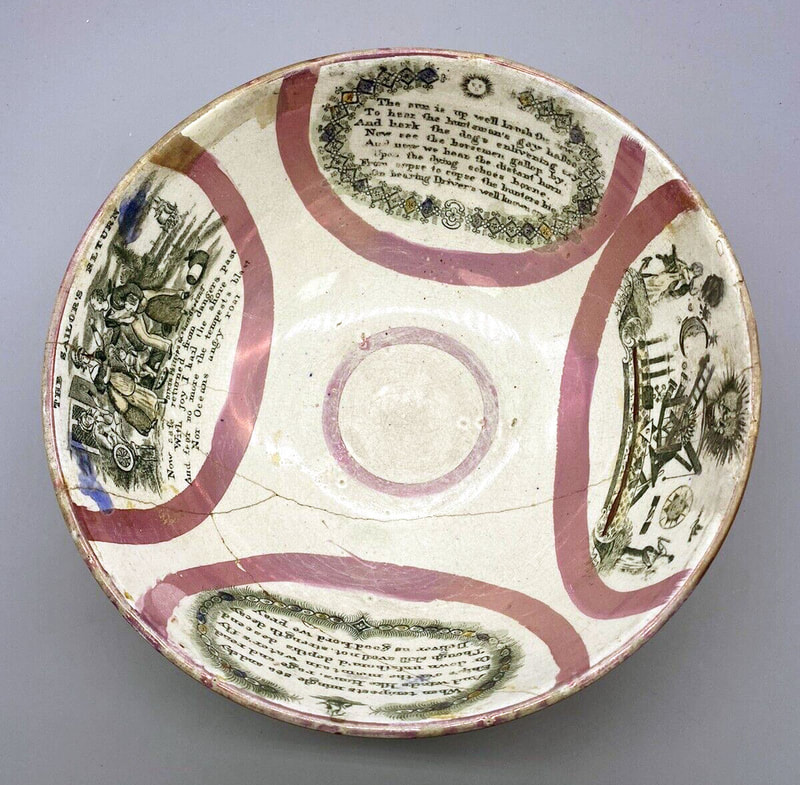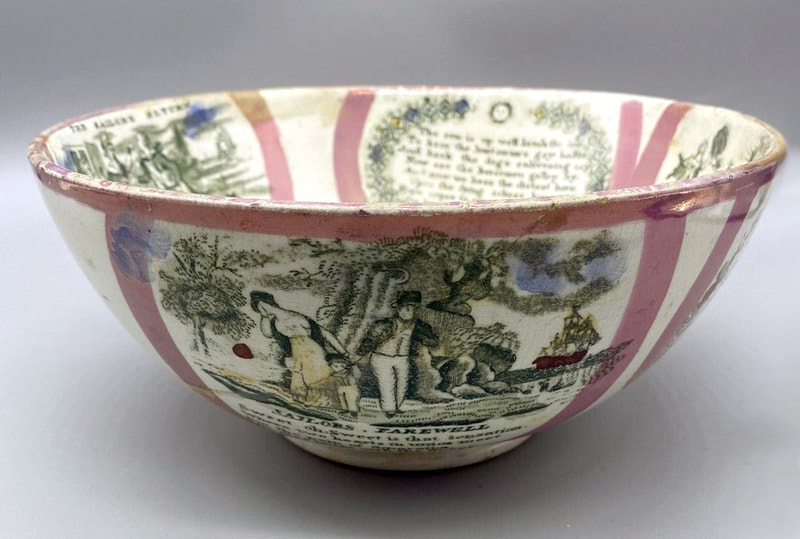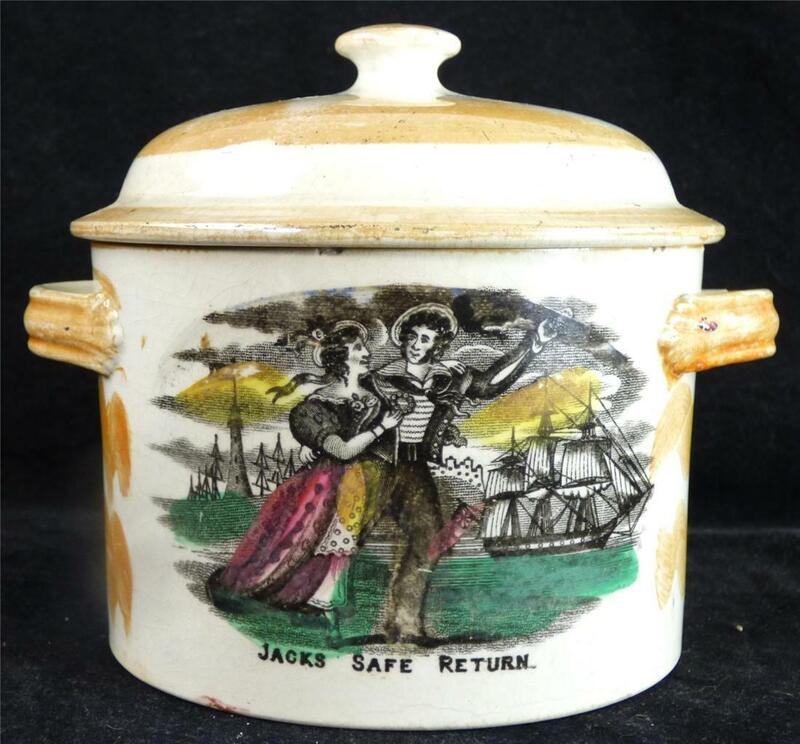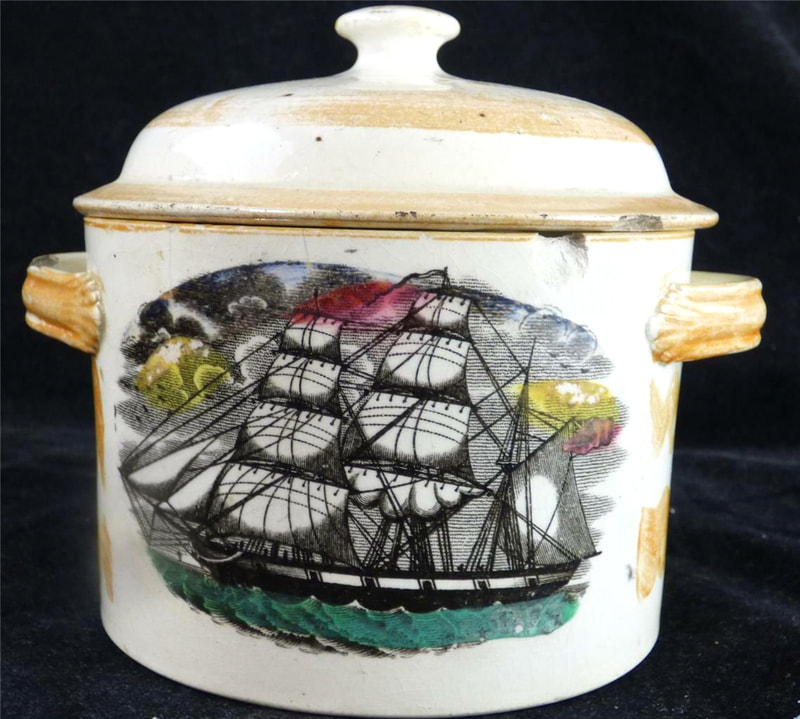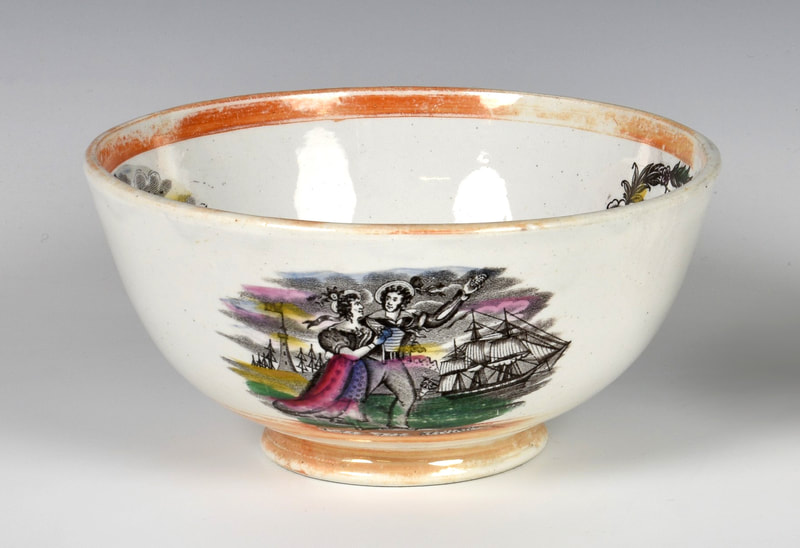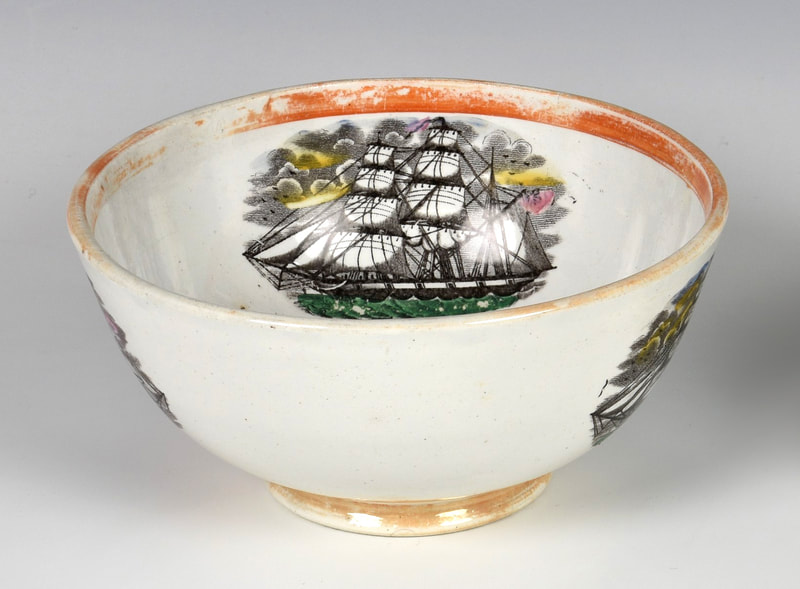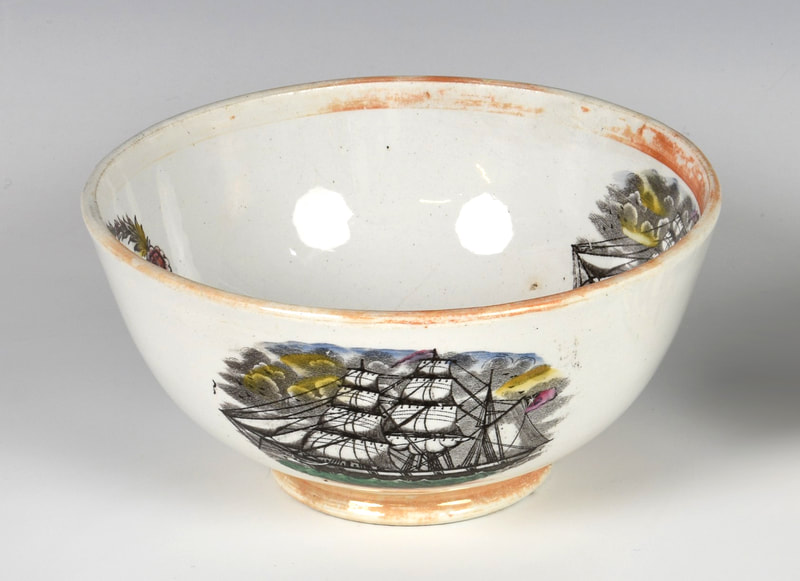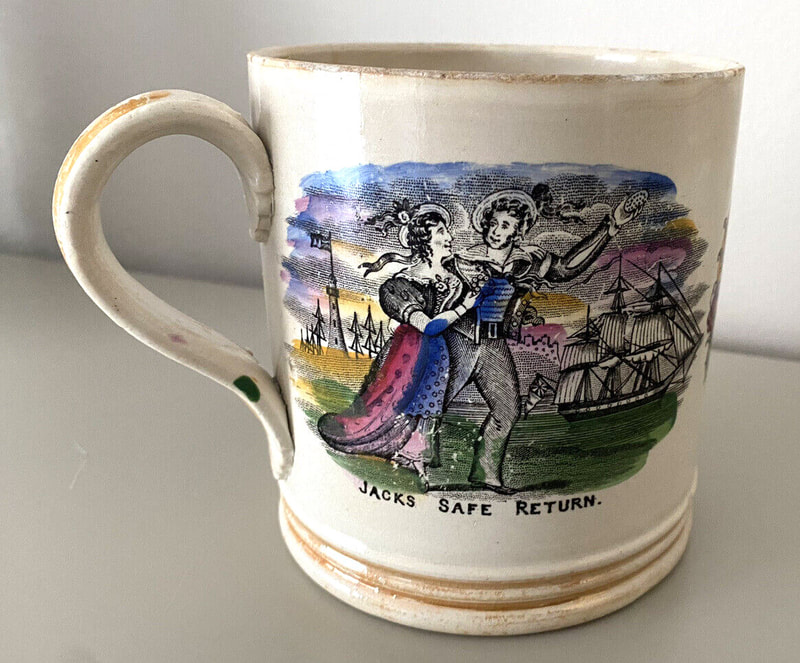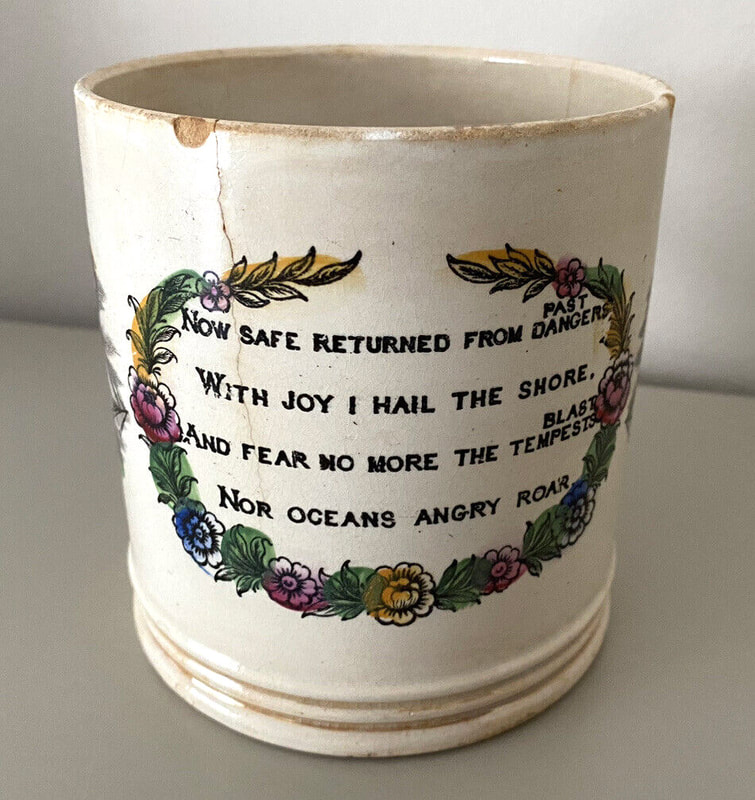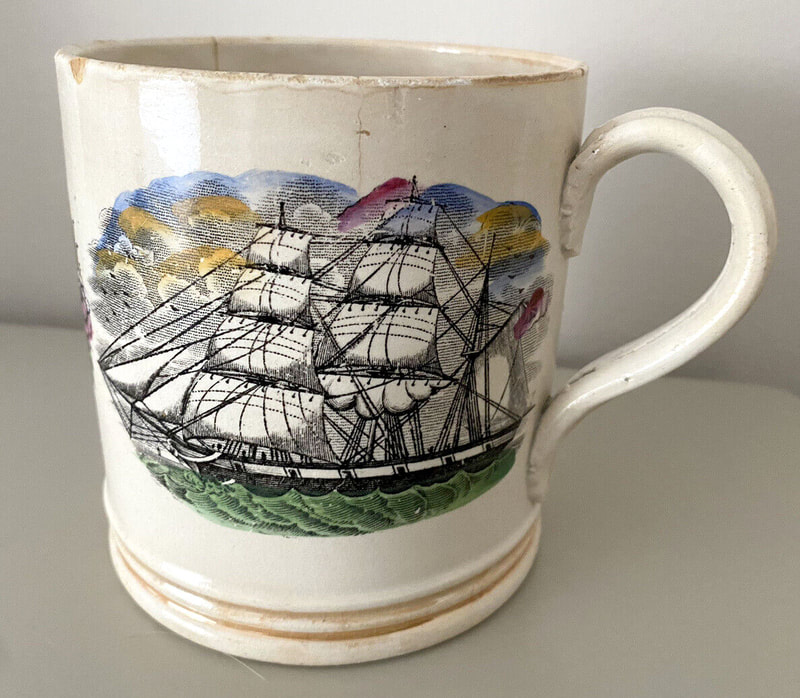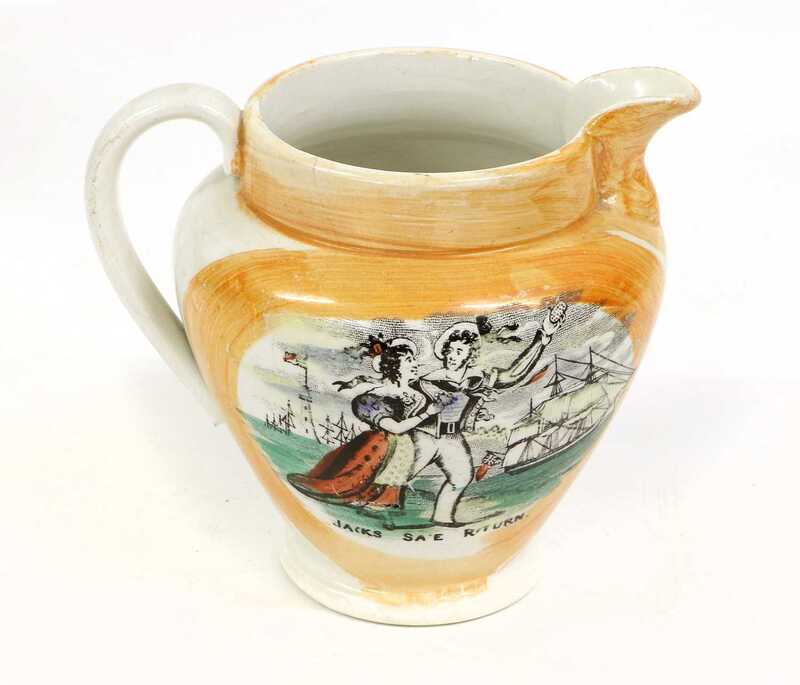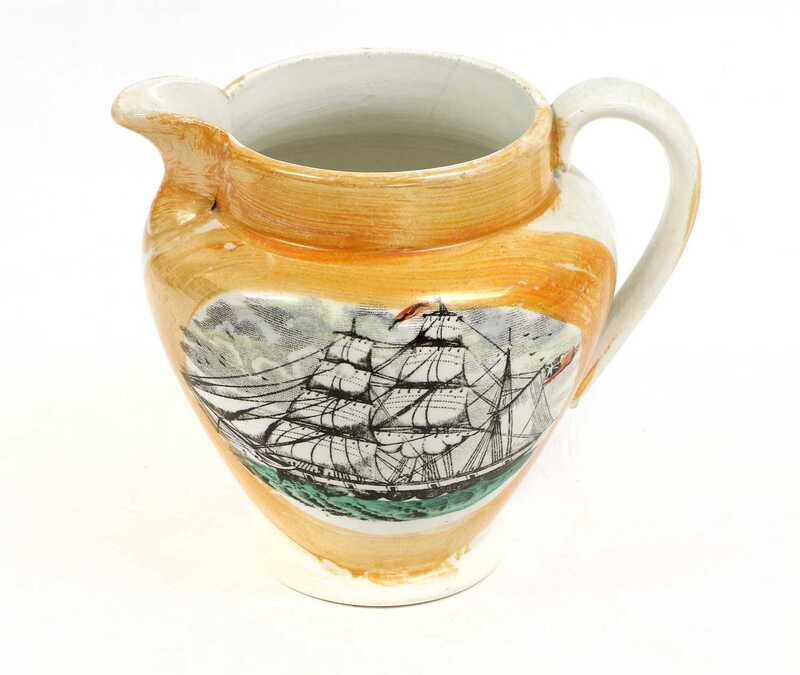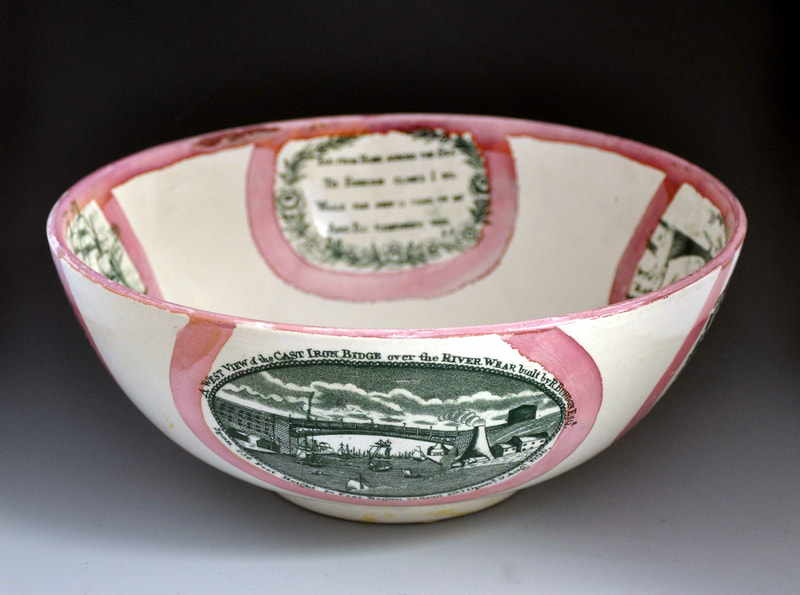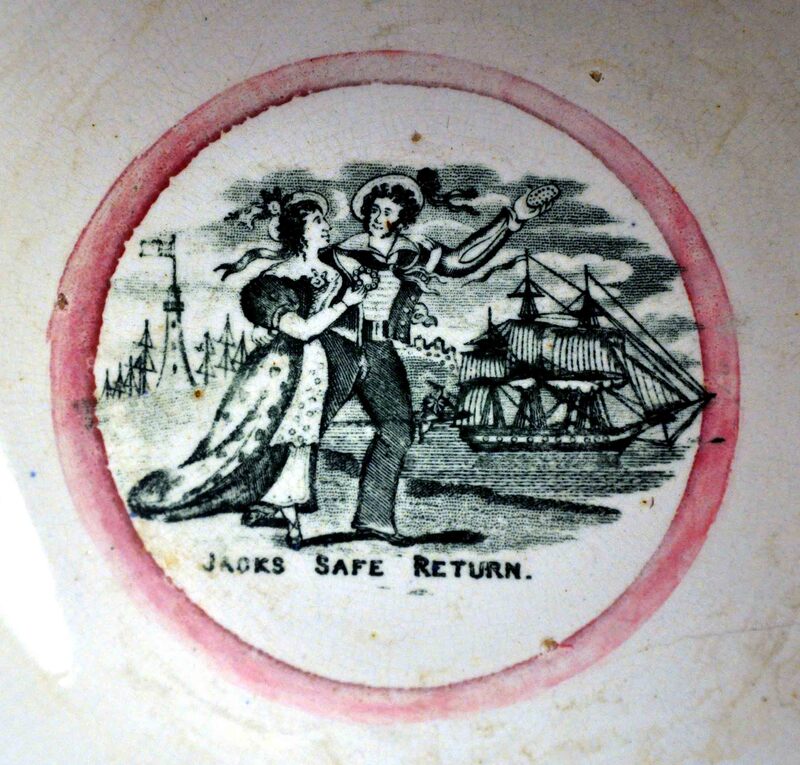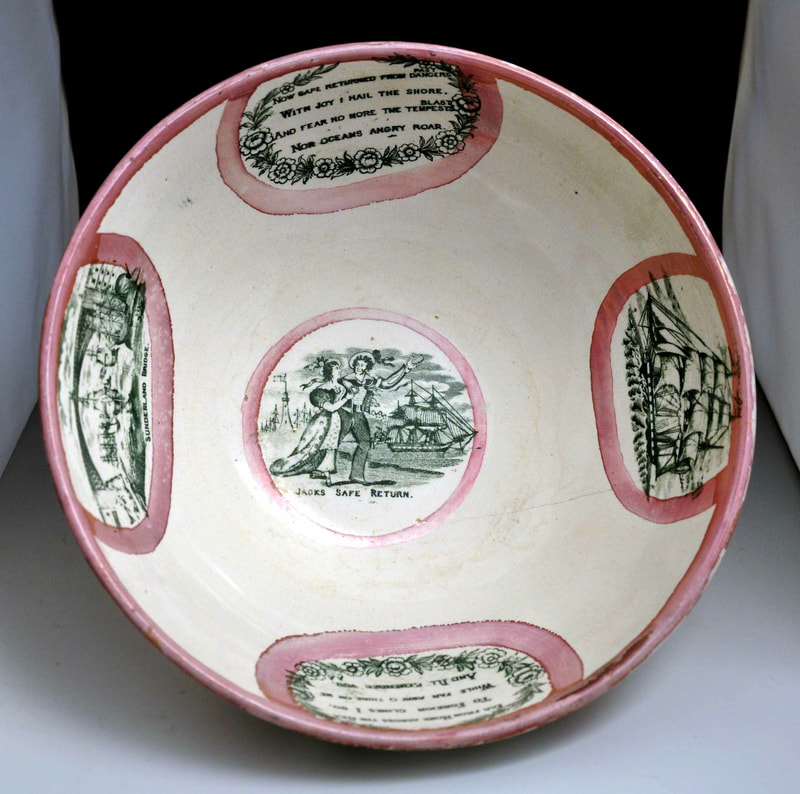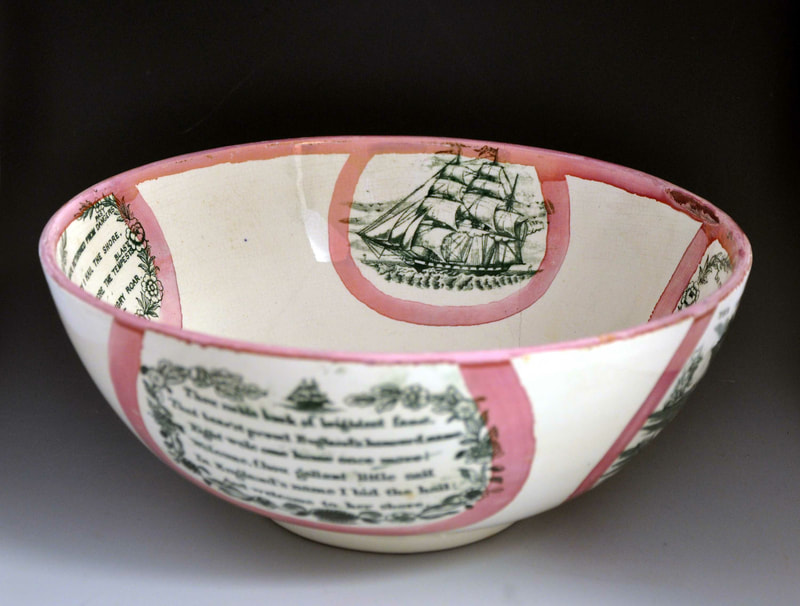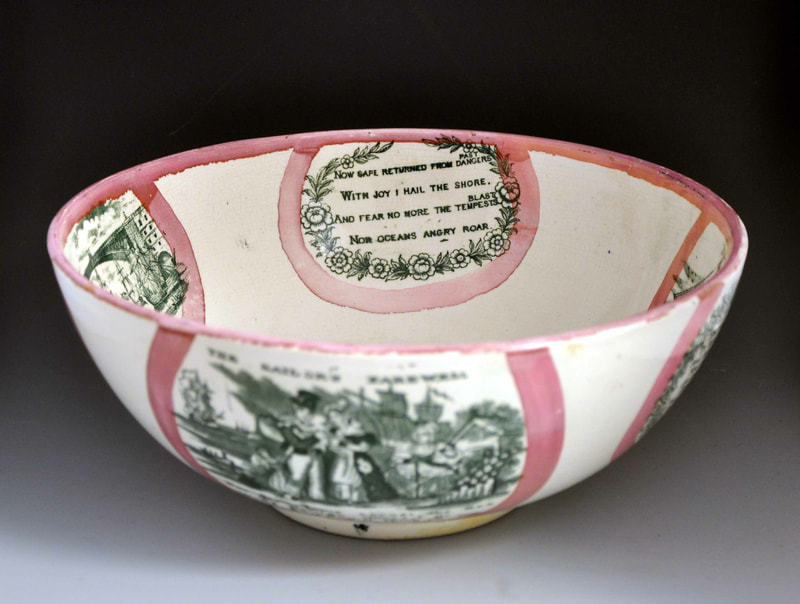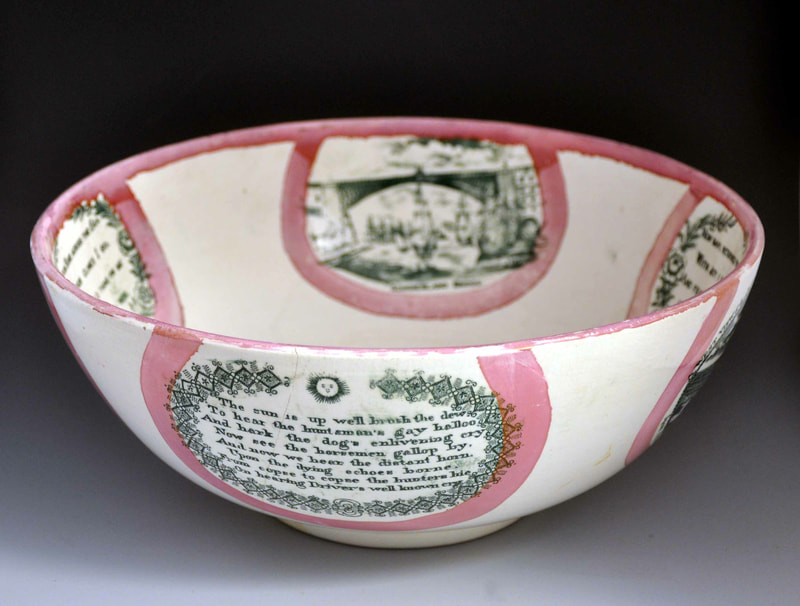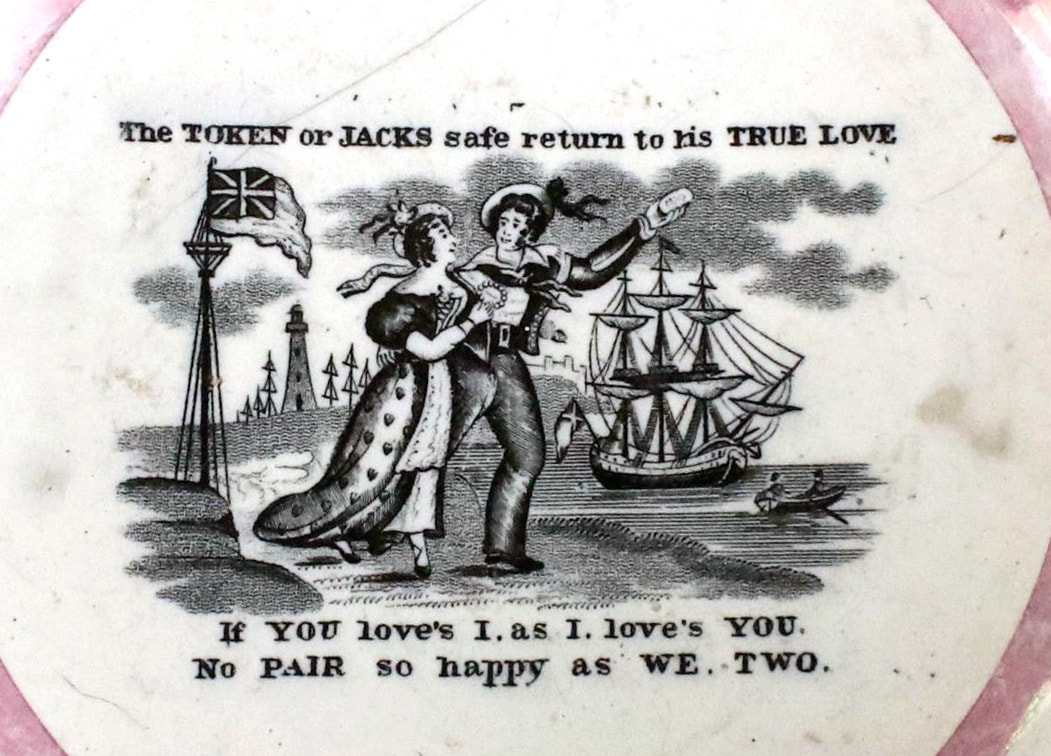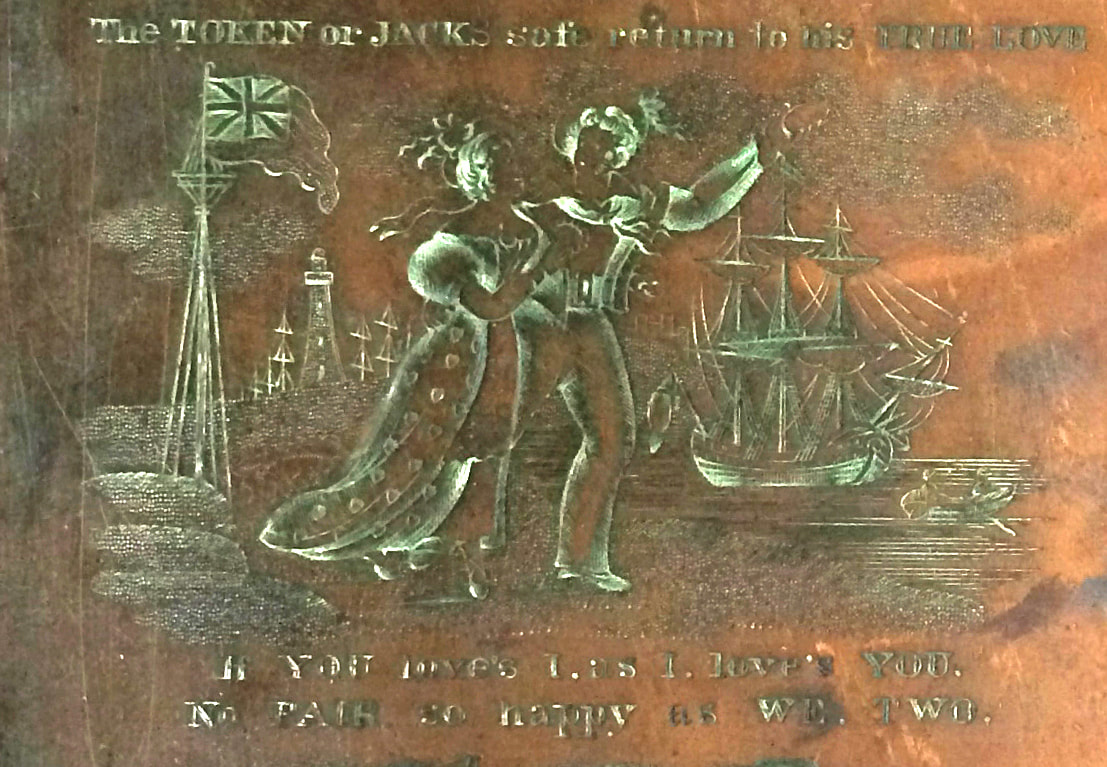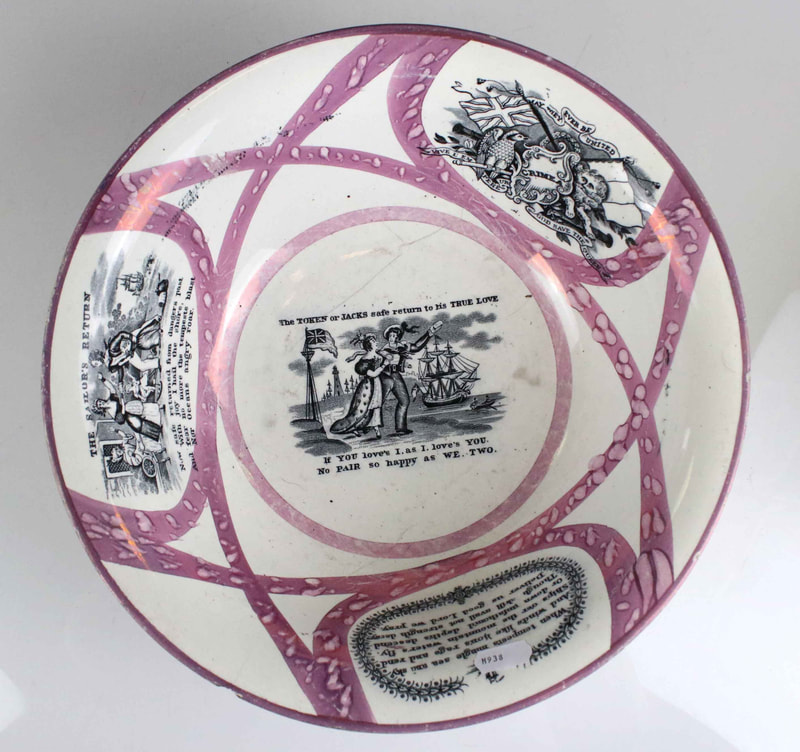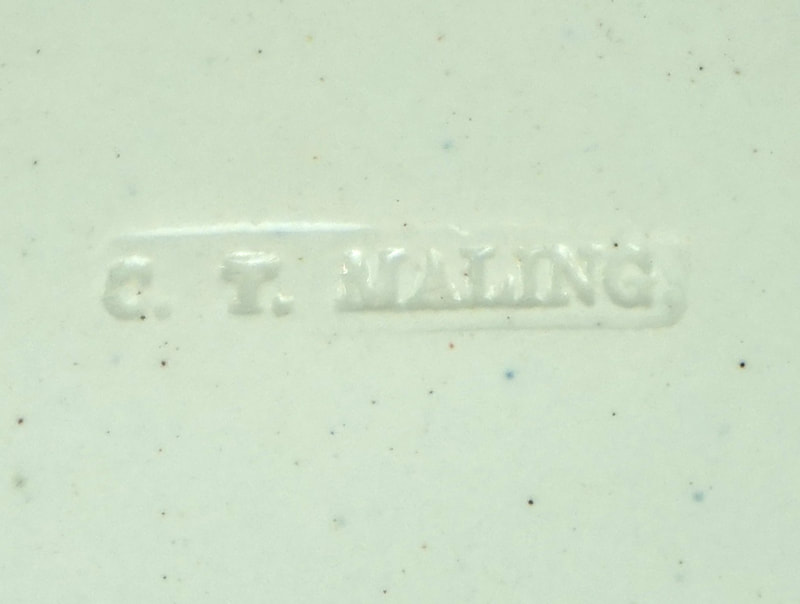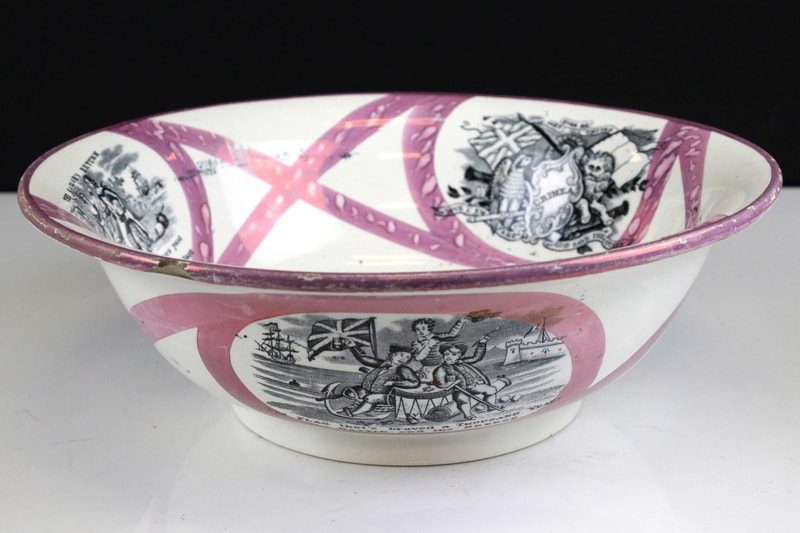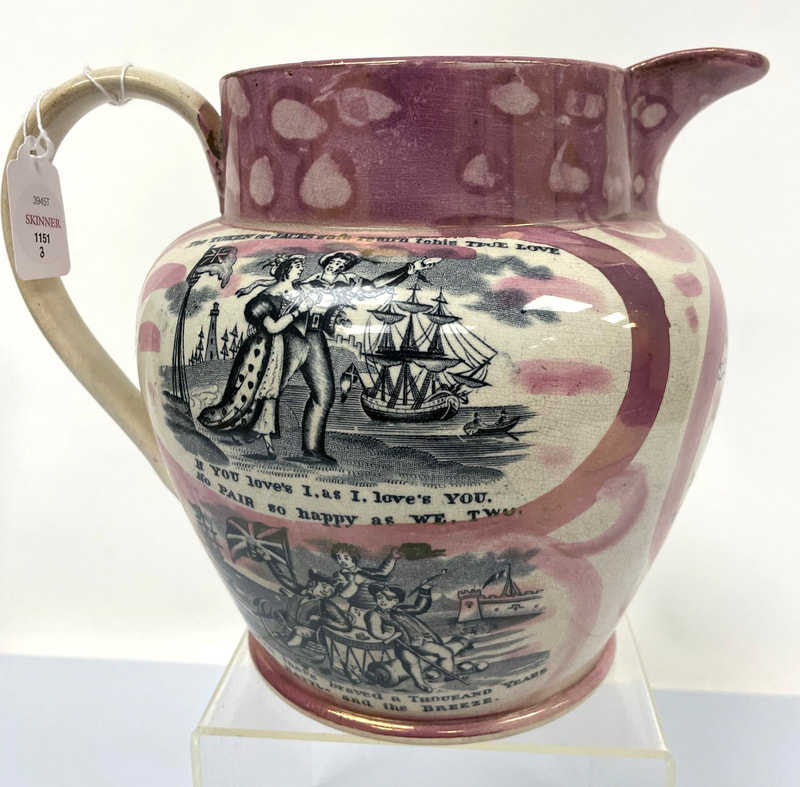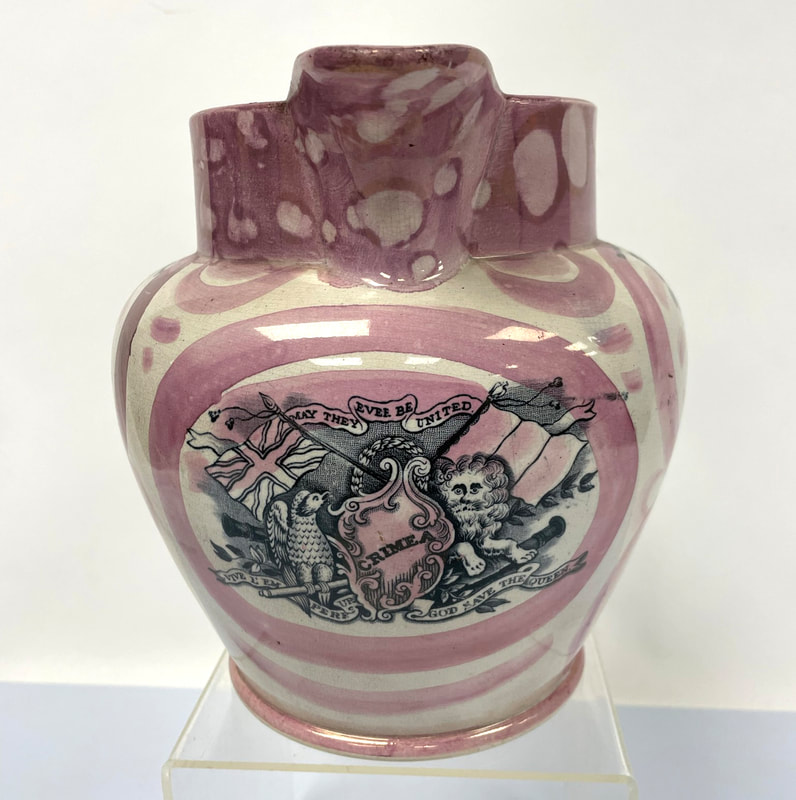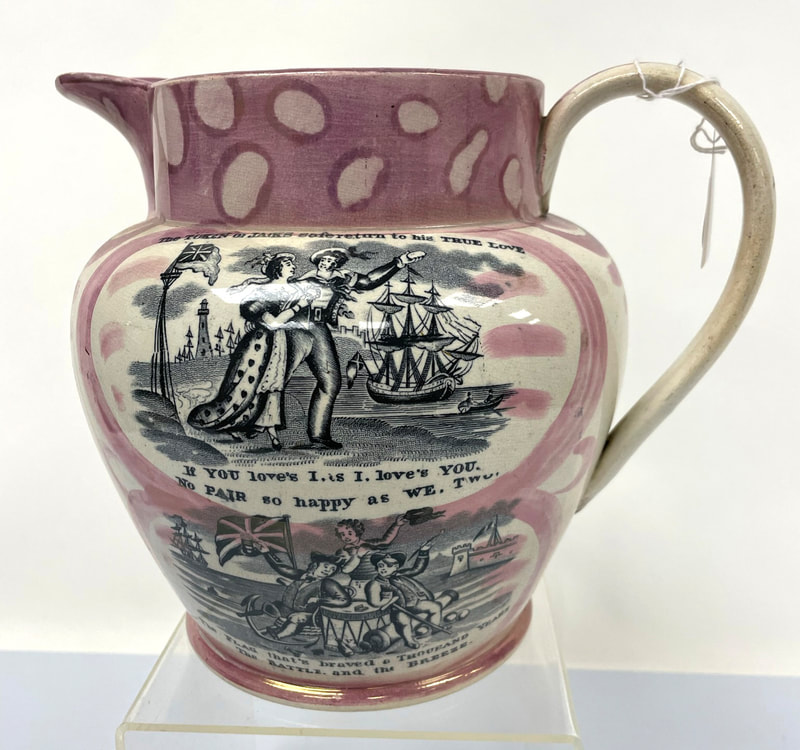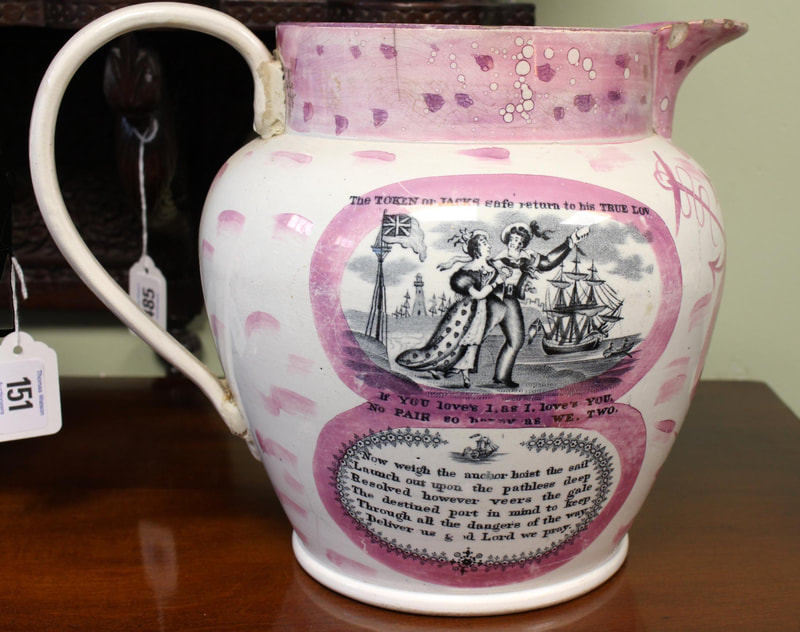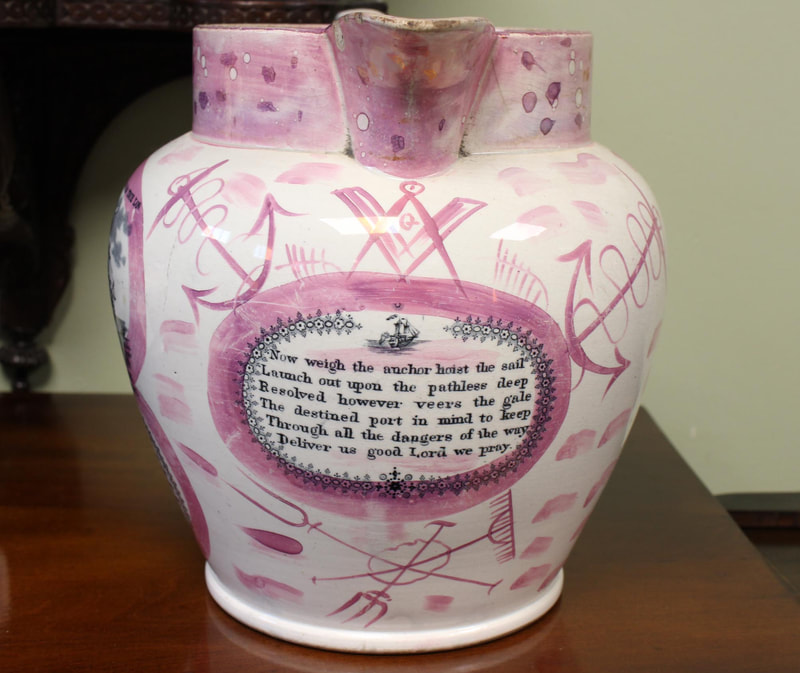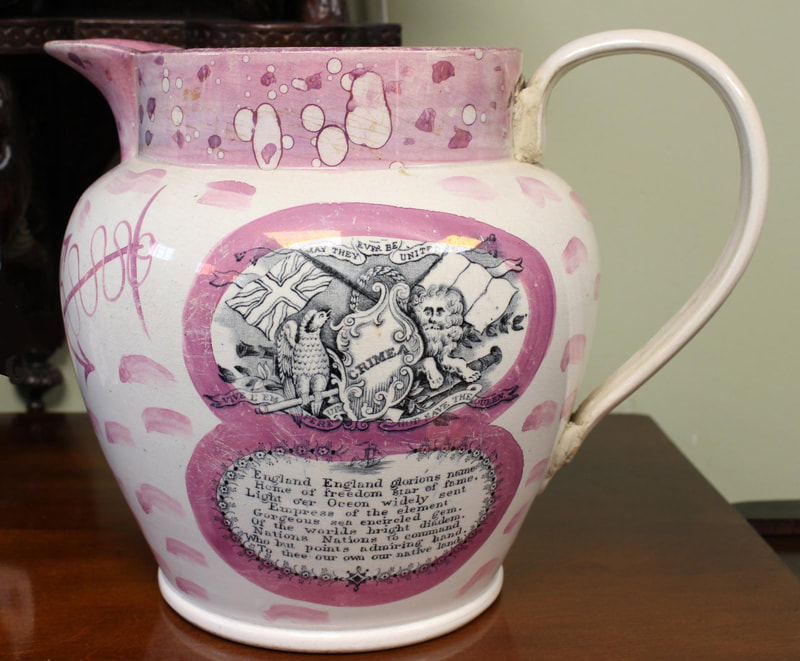The Token or Jack's Safe Return to his True Love – Sunderland
See the Flag That's Braved page for an overview of this series of transfers.
Moore & Co, Wear Pottery, Sunderland
Two bowls with the transfer, both with the Moore & Co impress and Crimea transfer.
A more unusual bowl, on a raised pedestal, also with the Crimea transfer and Moore & Co impress.
Below a jug with typical Moore lustre decoration. It has a transfer of the New Sunderland Bridge, so post 1859.
Below, a rare and fabulous teapot of large proportions, with the transfer, from the Sunderland Museum & Winter Gardens, Tyne & Wear Archives & Museums collection.
Scott of Southwick – plate 1
A jug with typical Scott flower decoration around the collar, from the 1840s.
|
As discussed on the Flag That's Braved page, Scott's had a second, slightly simplified, copper plate engraved (right detail), most likely when the first became worn or damaged. This second copper plate (see below) was used throughout the Crimean War period, c1855. |
A similar jug with a hand-painted inscription for 1845. The bridge transfer has an obliterated Scott & Sons printed mark.
Scott of Southwick – plate 2
Below, a jug and a bowl with the Crimea' transfer, c1855.
Below, two jugs with wavy lustre decoration typical of Scott's in the 1850s and 60s.
An eel pot or butter dish with very similar enamelling to the items above.
The transfer on the plaque is a fainter imprint making it hard to compare. It is likely from a similar date as the items above.
Thomas Snowball, Sheepfolds Warehouse
Sheepfolds Warehouse is know to have a side line in glass rolling pins, and many examples have Moore / Scott transfers. This appears to be the Moore version at the top of this page.
Ball's Deptford Pottery
The copper plate for this version of the transfer was donated by the Ball family to the collection of Sunderland Museum & Winter Gardens, Tyne & Wear Archives & Museums. At a later date, someone added the fake printed inscription 'Dixon, Phillips & Co, Sunderland' to some of the other transfers on the copper plate (see bottom right below). My guess is that this was done sometime after the Garrison Pottery closed in 1865 and with the intention to deceive.
The second bowl below has washes of coloured over-enamels.
Moore & Co / Scott of Southwick, Sunderland or Ball's Deptford Pottery
A simplified version of the transfer, circa 1870 when orange lustre became fashionable. These transfers were shared by both Moore and Scott (the latter pottery supplying the former with 'blanks' for decoration), and went on to be acquired by Ball's Deptford Pottery.
The enamelling is very consistent on these items. Also, it is interesting that the transfer appears with the same untitled ship, suggesting they were on the same transfer plate. The tall shape of the jug below with a short spout is typical of Ball's Deptford Pottery. Note also the different enamels.
Ball's Deptford Pottery
The bowl below is firmly attributable to Ball's Deptford Pottery and has the Sailor's Farewell transfer that appears on the copper plate donated by the Ball family to the collection of Sunderland Museum & Winter Gardens, Tyne & Wear Archives & Museums.
The Token or Jack's Safe Return to his True Love – Tyneside
C T Maling, Ouseburn Bridge Pottery, Newcastle
The Maling copper plate (below right) now resides in the collection of the Laing Art Gallery, Newcastle upon Tyne (Tyne & Wear Archives & Museums). See here for an image of the other transfers on the copper plate.
The transfer appears on a wash bowl with an impressed mark. The large jugs beneath it are typically unmarked.
